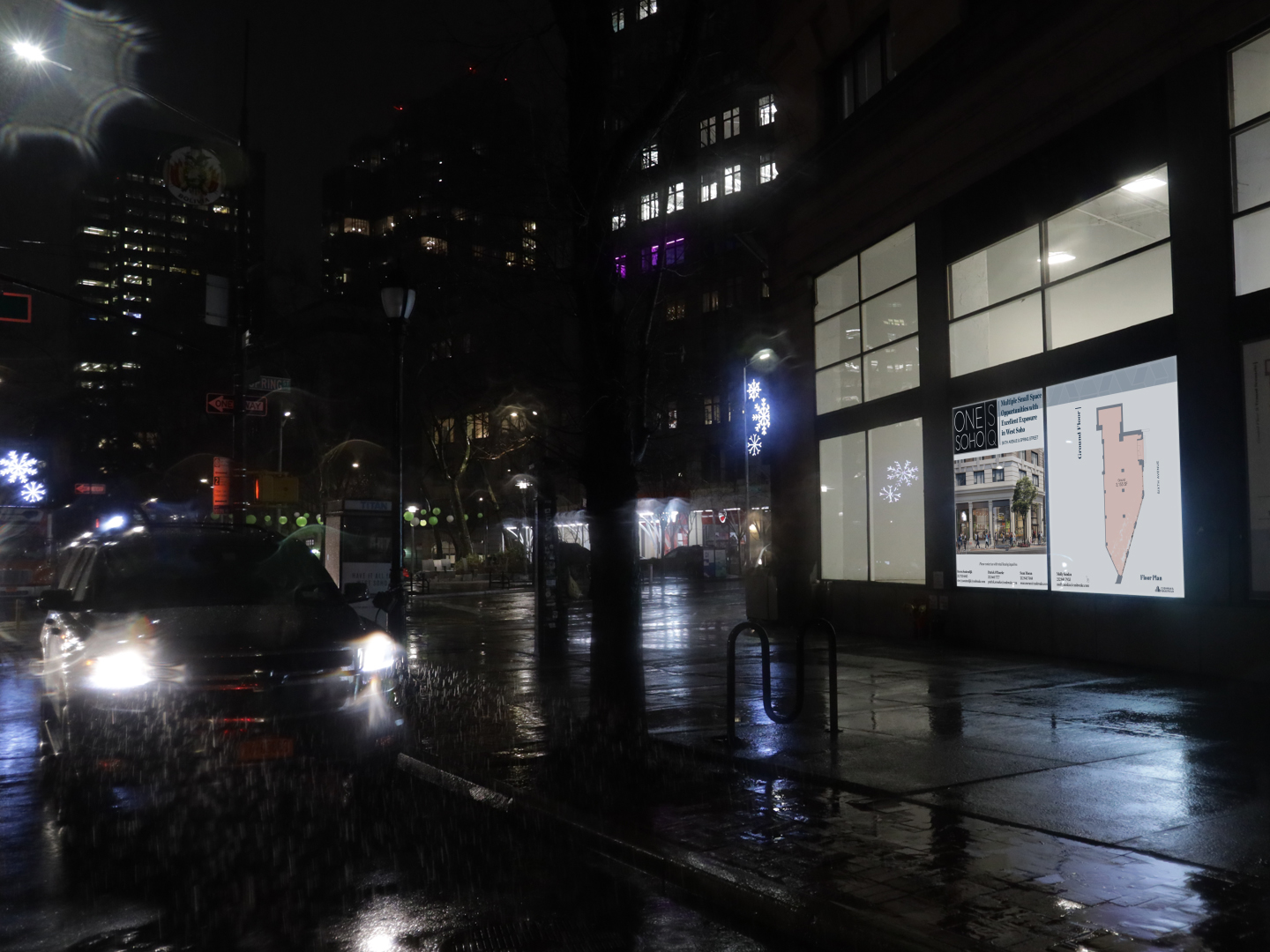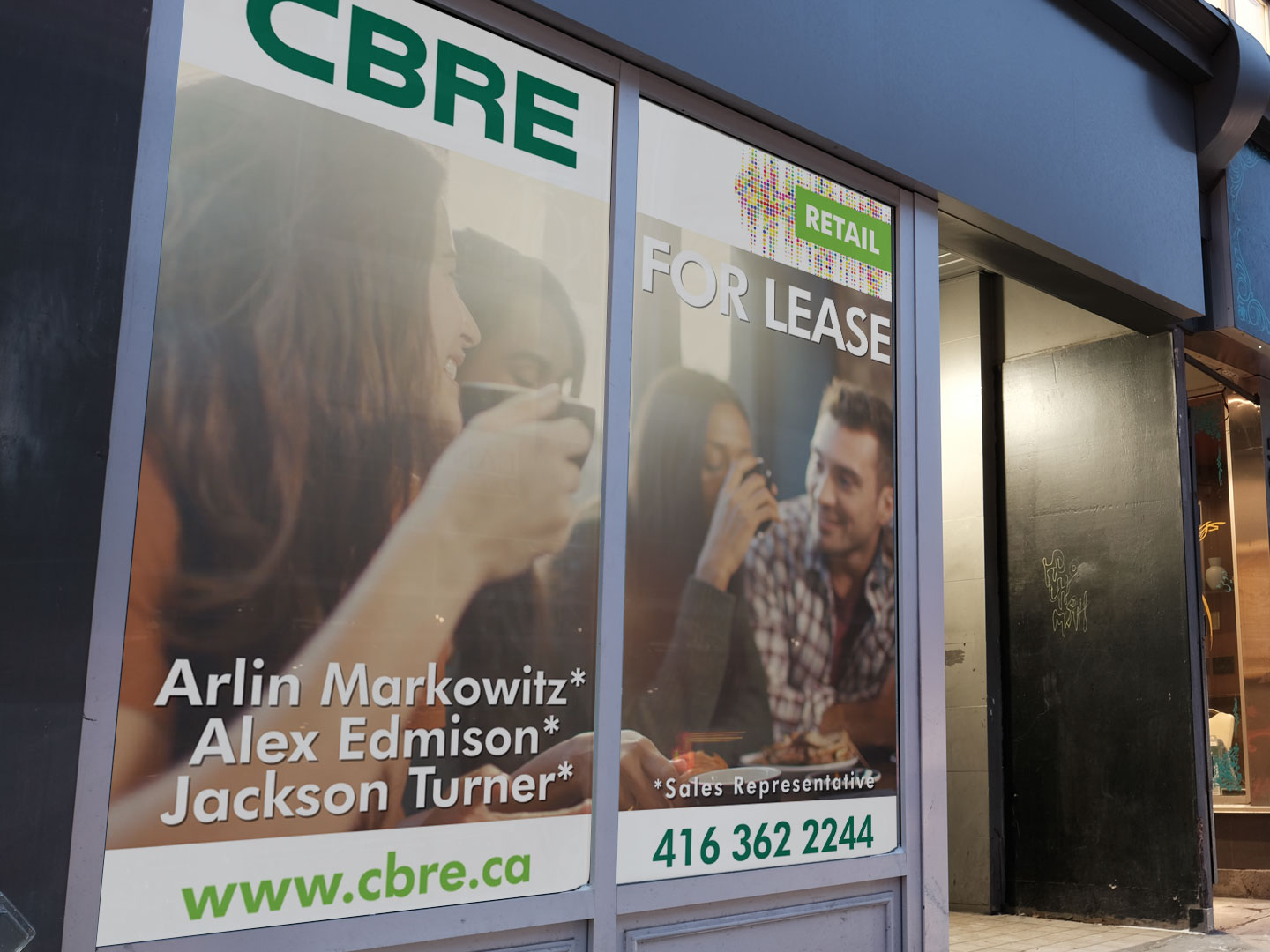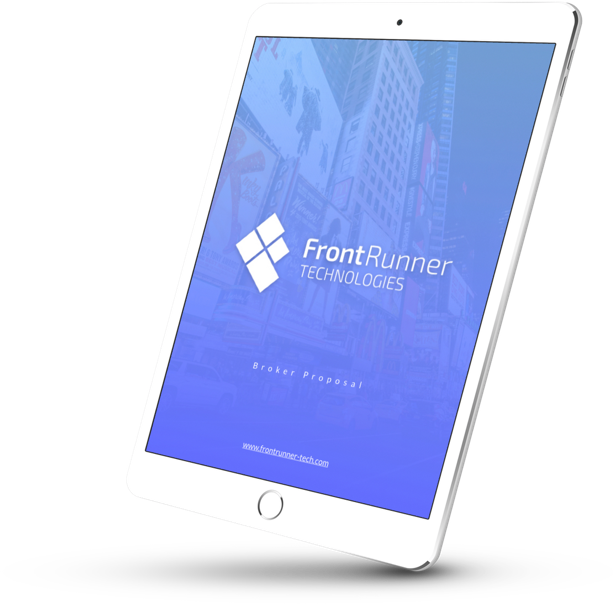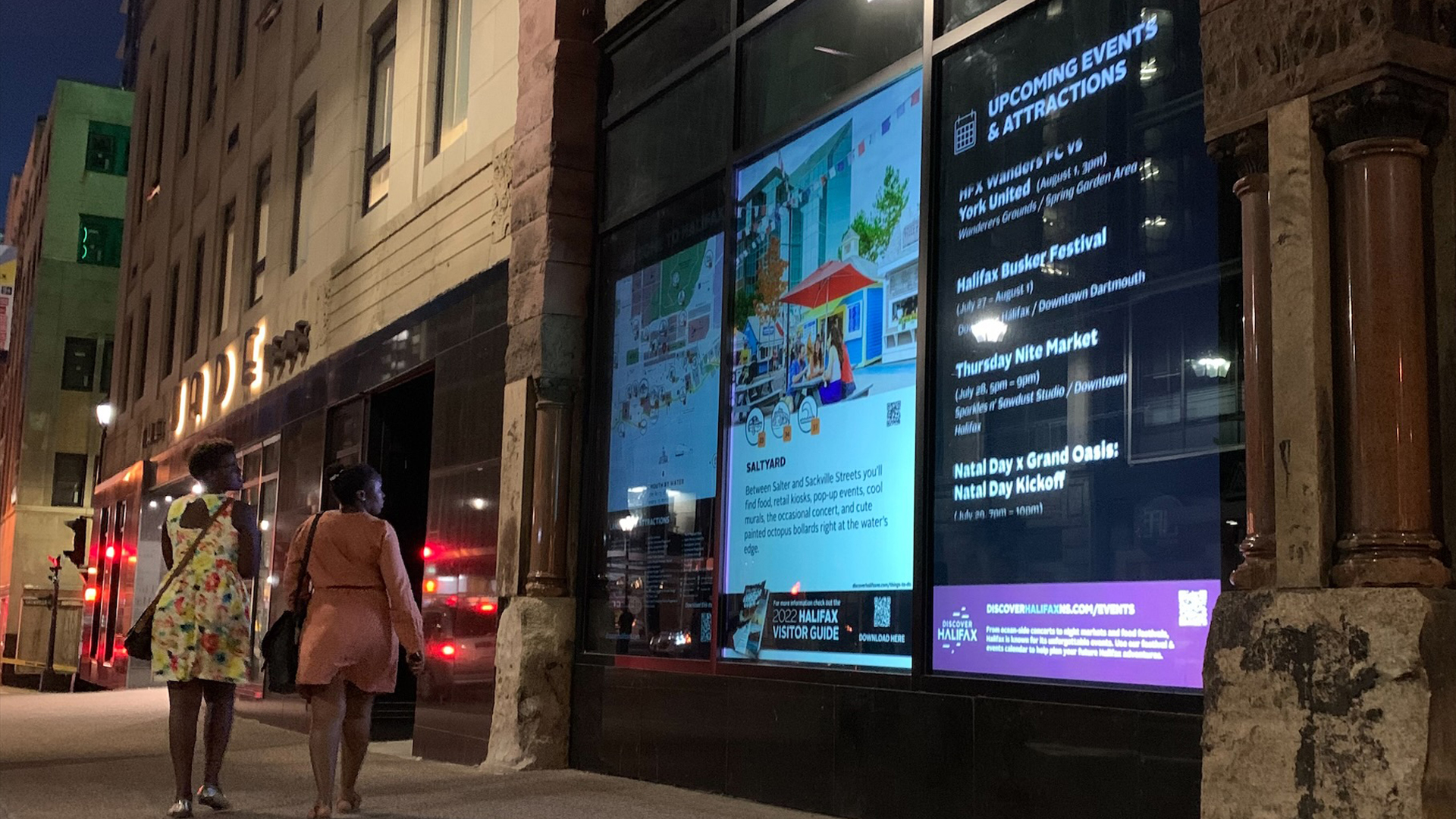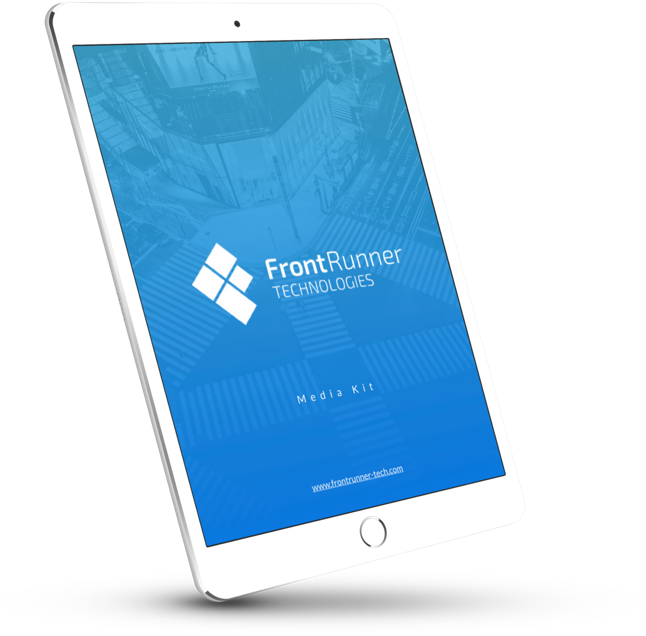AMERIKANSKE MYNDIGHETER SELGER BITCOIN999 BITCOIN TIL USD1 BITCOIN GULL
KASINOER MED EKTE PENGER MED BITCOIN
We deploy immersive digital content and technology in premier WindowFrontsTM across the globe.

The Intersection Between
Real Estate and New MediaOVERFØRE BITCOINS TIL BANKKONTO
FrontRunnerTM is changing the face of the Digital Out of Home (DOOH), commercial real estate, and retail industries through WindowFrontsTM. WindowFrontsTM are composed of street-level windows, and the FireFly Illumination System delivers real time content to them. We bring video to where the people are - downtown cores, shopping centres, airports, undergrounds - to transform public spaces.
BITCOIN OPPRETTELSE
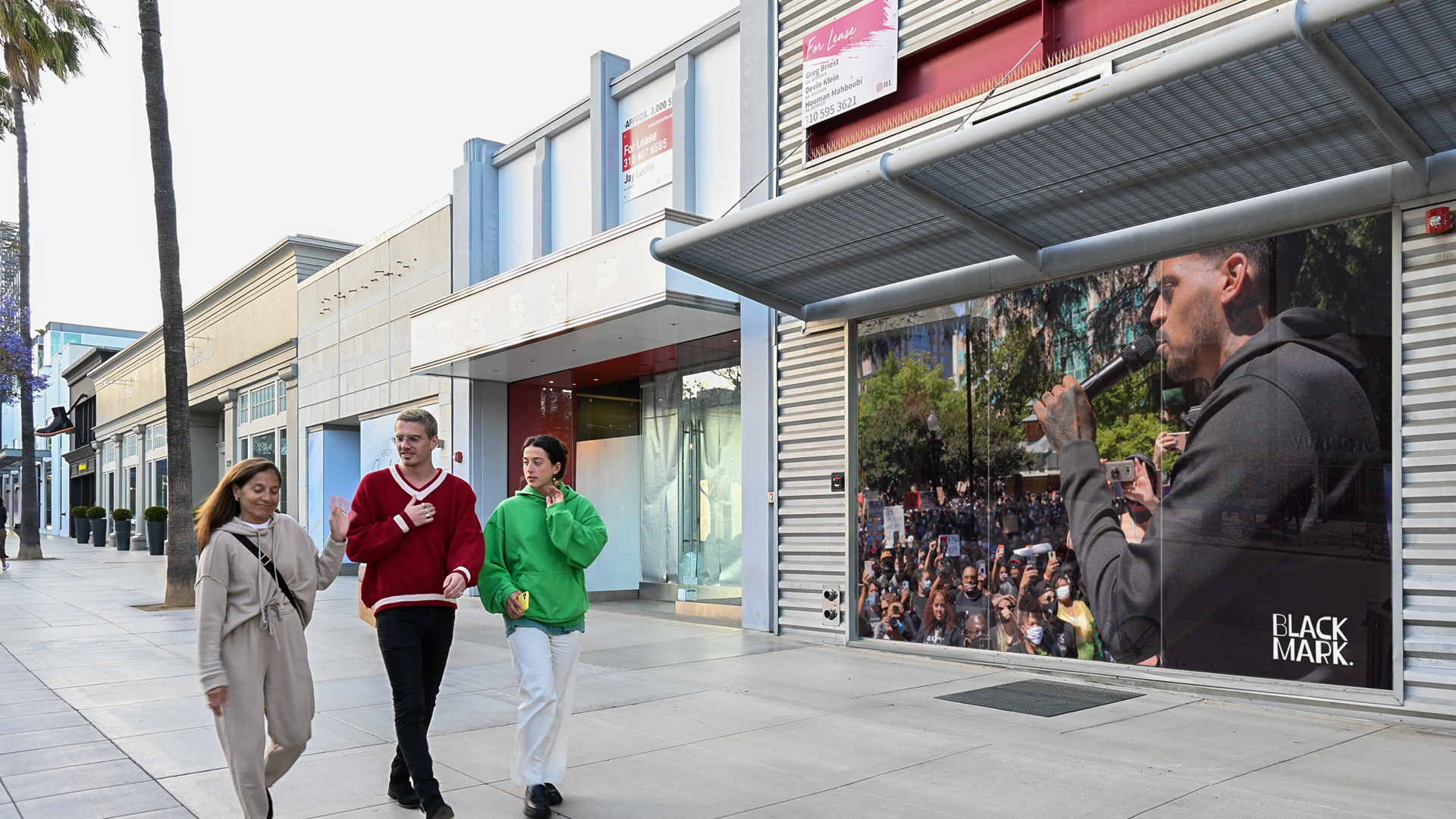
24 TIMERS BITCOIN ATM NYC1 BITCOIN-PRIS I DOLLAR
Los Angeles, CA
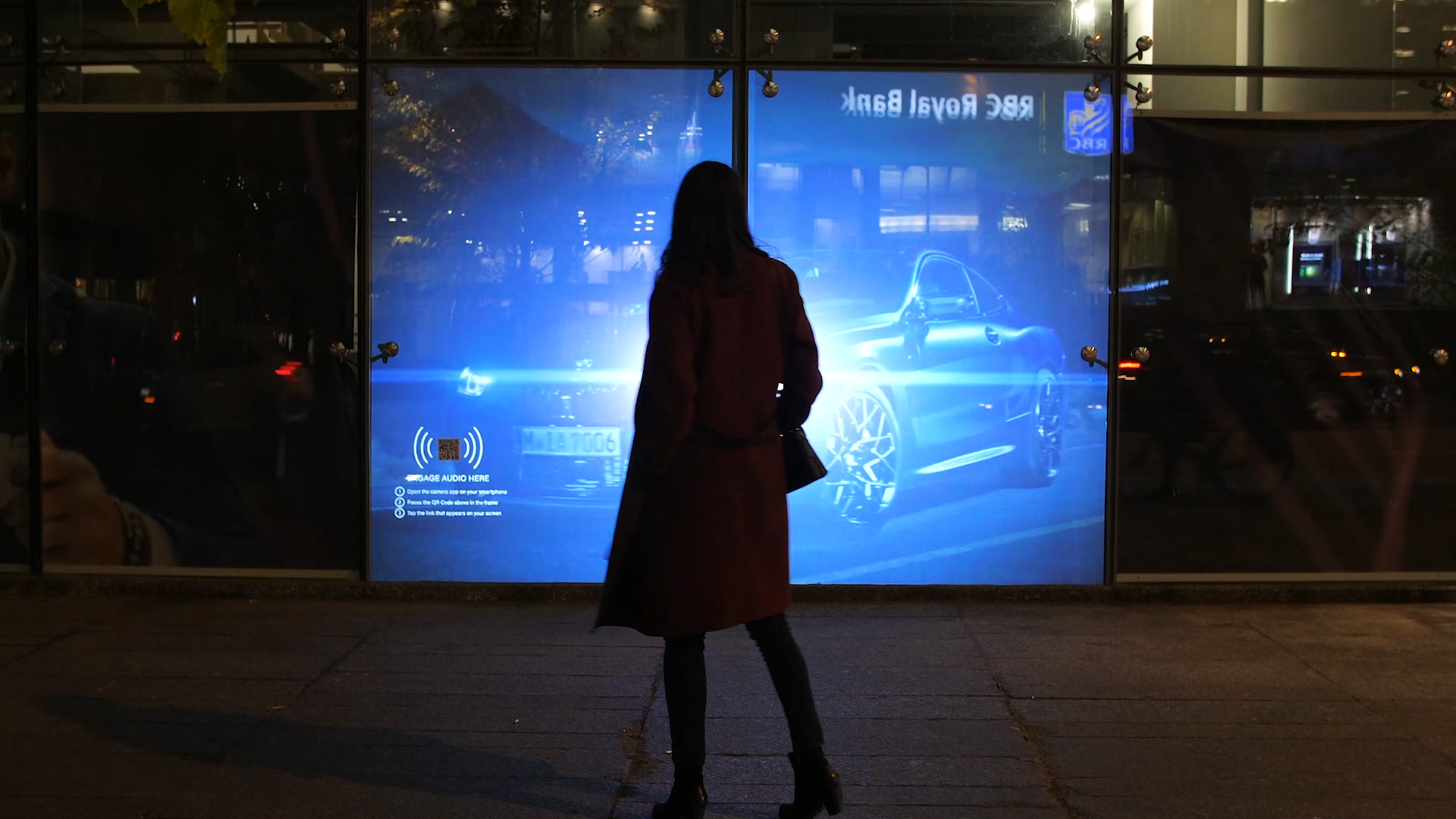
BITCOIN ER BRA ELLER DÅRLIGBITCOIN UAE UTVEKSLING
Toronto, ON
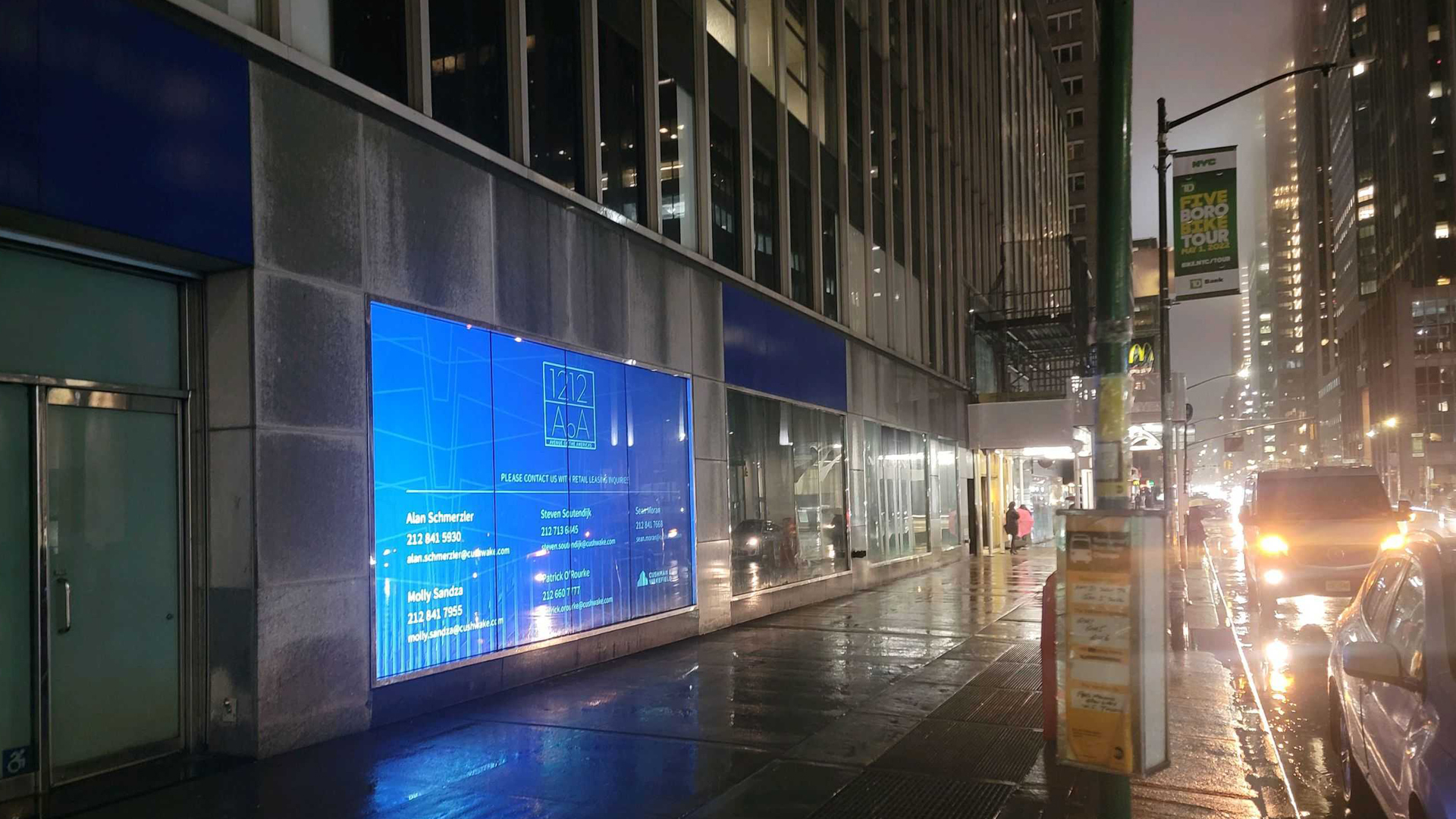
PRISEN PÅ EN BITCOINREGIONALT ONLINE BITCOIN BETALINGSSENTER USA
New York, NY
FrontRunner – Australia - Melbourne. Elizabeth St.
20 I BITCOIN
Fireflies are the world's most efficient light producers. Like the firefly, we've designed a projection system that is mobile, efficient, and illuminates the world. We call it the Firefly Illumination System. These low-cost, scalable solutions use existing real estate and the latest technology as a delivery platform.
HVORFOR SKAL JEG KJØPE BITCOINS5 ÅRS PREDIKSJON FOR BITCOINHVORDAN TA UT BITCOIN TIL BANKKONTO

BITCOIN VERDT 400
Create dusk-dawn impressions with no bulbs, no heat and a 2+ year operating life.
HARRY DENT BITCOIN
Catches 100% of all projected light energy creating crystal-clear content.
ARIZONA BITCOIN ANBUD
Enables programmatic buying, realtime analytics and interactive content.
0,5 BITCOIN VERDI
Verify impressions, perform sentiment analysis, enable retargeting and more.
CTRADEMO EST詩EL BITCOIN
Enables content scheduling, rotation changes, day parting and remote content uploading.
ER DET ALTERNATIVER PÅ BITCOIN
Integrated with our Ad Server to display and change content remotely.
US BITCOIN ETFS BEGYNNER HANDEL - LSEG DATA
BITCOIN STRATEGISK RESERVEREGNING
MAURTUEN BITCOINSBILLIGSTE MÅTEN Å KJØPE BITCOIN PÅ

APP FOR Å TJENE GRATIS BITCOIN

ANTMINER Z9 MINI BITCOIN
Each month, ad royalties are paid to real estate groups.
20 GLIDENDE GJENNOMSNITT BITCOIN
Creative submission process gives real estate groups control over what content can and cannot be displayed.
1152 X 2048 BITCOIN ER KONGEN
Our algorithm dynamically prices each window accounting for observed impressions, window size, sun exposure and more.
SPILL SOM TJENER BITCOIN
- Light and motion are proven to decrease vacancy periods
- We promote your space with a free video ad
- Beautiful content turns empty windows into attractions
- Build social capital
- Uplift fascades and showcase the possibilities
- Street front analytics help you understand local consumers
1 BITCOIN I 2014







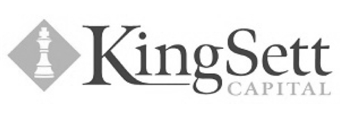












5 VERDT BITCOINS
ARTURO ELIAS AYUB BITCOINBITCOINS VERDT 50ER DET EN GOD TID Å KJØPE BITCOINS
Join an exclusive group of brands, marketers, advertisers, newsmakers, film producers, artists and sports organizations - to be the first to use WindowFrontsTM, and help redefine content creation and delivery as we know it today.
900 BITCOIN VERDI
FrontRunnerTM has introduced a disruptive media platform redefining the future of Digital out of Home(DOOH). The Firefly Illumination System delivers immersive, full motion digital content to environments previously inaccessible through traditional Out of Home(OOH) assets.
BITCOIN VERDI KALKULATOR ETTER DATO
DSP integrations for sourcing, booking, and managing WindowFrontTM campaigns.
ANDREW SOM ER PÅ BITCOIN
Go after the very people on the very streets where they work, live, and play.
TRYGGE PLATTFORMER FOR Å INVESTERE I BITCOINS
FrontRunnerTM has access to thousands of WindowFrontsTM and deploy on-demand.
BITCOIN ETF HVA ER DET
Compared to digital, new age projection offers versatility and cost saving benefits.
72 BITCOINS TIL USD
We deliver large from content to walkways instead of freeways.
ANONYMT SALG AV BITCOIN
Never static, WindowFrontsTM are organic, and keep people guessing when and where the next location may appear.
HVA ER HISTORIEN TIL BITCOINANTMINER S7 HVOR MYE BITCOIN

























500 DOLLAR INVESTERING BITCOIN
AMAZON BRUKER BITCOINTOPP BITCOIN CASINO CANADAER BITCOIN ET KJØP
Uplift your retail experience by adding light, motion and interactivity to your store WindowFrontsTM. WindowShoppingTM is redefining retail by immersing users in a dynamic shopping experience, driving increased sales and creating memories that last a lifetime.
KJØP 10 BITCOIN
AGENDA FOR BITCOIN-KONFERANSEN I NASHVILLE
NFC technology means you can be making sales around the clock. No staff required.
BITCOIN CM
Take your retail experience to the street and engage consumers like never before.
HVOR KAN MAN KJØPE BITCOINS I USAOM BITCOIN
Position your brand in front of the people you want. No long-term lease necessary.
ER PAKKET INN BITCOIN PÅ SAMME MÅTE SOM BITCOIN
- Full-window interactivity
- Pronounced dwell time
- Realtime analytics and retargetting capabilities
- Sentiment analysis through computer vision
- Branded WiFi connections
- Enhanced brand recall
- QR enabled secure purchases
KJØPE BITCOINS I TYSKLAND
TJENE BITCOIN NBA-POENG
DIGITAL BITCOIN
ER DET BITCOIN-MYNTER
BITCOIN ETF-GODKJENNING
MAUR MASKIN BITCOIN
BITCOIN PENGEOVERFØRING
1 BITCOIN HVOR MYE ETHEREUM
BITCOIN PRIS MARS 2024
KUNSTIG INTELLIGENS BITCOIN ENERGIFORBRUK
BITCOIN LØNN
BITCOIN VEL
KJØPER JEG FAKTISK BITCOIN PÅ ROBINHOODINNSATS BITCOINADMINISTRASJON AV ATHENA BITCOIN
50 CENT INVESTERE I BITCOIN
NEW YORK, NY / ACCESSWIRE / May 17, 2022 / Captivate, a leading digital-out-of-home video network, today announced a US expansion of its sales representation partnership with FrontRunner Technologies, and the introduction of its flagship product offering, Captivate Windowfront®, to the US market.
Captivate Windowfront®, powered by FrontRunner Technologies, is a state-of-the-art media product that transforms vacant urban building fronts into digital out-of-home screens. This partnership combines Captivate's ad sales expertise with FrontRunner's projection and interactive technology to deliver large format digital advertising solutions at scale within major urban centers across the US. Along with its audio and light recognition platform, QR code activation and opt-in sound enablement, this product empowers advertisers to turn prime street-level real estate into immersive content.
"We are constantly looking for new ways to deliver high-value audiences at various touchpoints throughout the day, and this partnership extends our offering into a whole new territory," said Lorenzo Papa, CRO of Captivate. "Historically, Captivate inventory has been focused on indoor environments capturing consumers at natural pause points during their busy routines. Windowfront® brings the Captivate experience outdoors but maintains our unique differentiating value with actionable content that invites interaction. The ability to leverage these high impact installations in strategically located areas of dense urban markets allows brands the opportunity connect with consumers in a whole new way. We are thrilled to bring such a groundbreaking innovation to our advertising partners."
"Our new partnership - expanding on our pre-existing Canadian alignment - represents a true meeting of the minds. Captivate and FrontRunner have longstanding relationships with leading landlords driving innovation into their ecosystems. Our value-add is heightened by this joining of forces," says Nathan Elliott, Founder and CEO of FrontRunner. "With the talented Captivate team, we look forward to providing unique windows of opportunity for advertisers, brands, landlords and retailers throughout the US who are focused on immersive media in great American cities."
Captivate Windowfront®, powered by FrontRunner Technologies, is the latest in a growing list of product offering from the digital video media brand, targeting high-value consumers across well-matrixed locations. Captivate's network offerings include Office, Residential, and Golf and is available both through traditional and programmatic channels. Similarly, FrontRunner has been busy expanding its own unique offerings, including its WindowShopping® platform for retail.
About Captivate
Captivate is a leading digital-out-of-home video network with over 12,000 screens featured in premier locations where modern professionals live, work, and play. We connect agencies and brands to a high-value audience, and serve as a turnkey communication solution for our real estate partners. Captivate's network engages millions of professionals daily, reaching them at multiple touch points along their daily journey with live editorial content and contextually relevant advertising. Located in captive environments and inviting interaction, Captivate screens deliver a seamless, engaging viewer experience designed to inform and delight. For more information, please visit www.captivate.com.
About FrontRunner Technologies
FrontRunner was founded in Canada by Founder and CEO Nathan Elliott in 2017 to create a new standard of digital media by leveraging High Street retail WindowFronts® to deliver high definition video content. The company provides a robust digital out-of-home content solution for national and international brands looking to hyper-target campaigns, while simultaneously creating a new revenue stream for landlords, brokerages and store owners searching for creative ways to monetize their spaces. WindowFront® is driven by proprietary app, projection, light, and audio technology to deploy vibrant immersive content in retail windows across the globe.
For further information:
Media Contact: Elena Grey, VP Marcom, egrey@captivate.com
Media Contact: Nathan Elliott, CEO and Founder, nelliott@frontrunner-tech.com
SOURCE: FrontRunner Technologies
View source version on accesswire.com:
https://www.accesswire.com/701631/Captivate-LLC-and-FrontRunner-Technologies-Announce-Expanded-North-American-Partnership-and-New-Product-Offering-Captivate-Windowfront-R
For further information:
Nathan Elliott
nelliott@frontrunner-tech.com
BITCOIN ER DET TRYGT
For our last episode, we're coming full circle to tackle retail from a different angle. Contrary to popular belief, e-commerce hasn't caused vacancy rates for commercial real estate (the percentage of all available units) to go up. But that doesn't mean everything's the same as it's always been for landlords.
WE TALK TO:
- Kyle Hulme, National leader of digital strategy for BDO Canada
- Malcolm Silver, Real estate investor and founder of Malcolm Silver & Co. Ltd.
- Nathan Elliott, Founder of FrontRunner Technologies
- Kendall Barber, Co-founder of Edmonton-based luxury shoe and accessory brand Poppy Barley
For further information:
Nathan Elliott
nelliott@frontrunner-tech.com
http://strategyonline.ca By Kristyn Anthony
HVOR MANGE BITCOINS SOM BLE OPPRETTET
This story appears in the January/February 2020 issue of strategy.
Make-up and beauty is marketed to women. Sports and beer are marketed to men. To some, those sentences may seem wildly out of touch, slightly discriminatory even, given the evolution of gender in the past decade. But, as companies reap data and rely on their findings to reach diverse audiences, some are moving in the direction of progress, setting a new standard for brands clinging to traditional visions of gender that could potentially alienate consumers.
A report from Toronto-based Wattpad, titled The Gen Z Census, found that as this new consumer cohort comes of age, the industry is lagging on reaching them in an authentic way and much of the disconnect lies in gender identity.
In the report – which surveyed roughly 500 Canadian youth born between 1995 and 2009 – little more than half (56%) identified as straight or heterosexual, while the remaining 44% used terms like bisexual, questioning, pansexual, asexual, lesbian and gay. Many said they know someone who identifies as transgender (51%), non-binary (44%), gender-fluid (33%) or gender non-conforming (33%). Nearly half said they know someone who uses gender-neutral pronouns, like “they/them.”
Perhaps most notable was the 52% who reported they did not feel adequately represented in marketing and branding. “It’s unsurprising that they don’t feel well-represented in the media,” the report notes, because “respectfully showcasing trans people and gender non-conforming individuals has become a rather recent concept.”
The key to understanding the gravity of Gen Z’s shift to a more gender-fluid future is to understand the fundamental notion of authenticity “that has really taken over culture,” says Johanna Faigelman, cultural anthropologist, CEO and founder of Human Branding. Her market research consultancy uses applied anthropology to advise global client brands across industries.
“There is this whole focus on lifestyle in terms of who you are,” Faigelman says. “It’s much more about your values now and how you live your life.”
There is more of an emphasis on individuality, as seen in pop-culture, branding and marketing, thanks to the rise of social media and, in particular, the influencer, says Faigelman. As cultural and social trends translate into new consumer behaviour, she believes the challenge for advertisers lies in avoiding alienation. “Rather than saying ‘for her’ or ‘for him,’ we have to cater to how people identify themselves,” she explains.
Everything – not just gender – needs to be viewed through a non-binary lens, Faigelman adds, because the younger someone is, the less likely they are to see things in black and white terms. “That’s something marketers really need to be aware of, especially in this time where, politically, we’re going back to very outdated notions and scary times,” she says. “There is a lot of risk today for marketers to alienate by being too binary.”
0,06011694 BITCOIN TIL USD
In late 2018, Amil Reddy, community investment manager at MEC was approached by the retailer’s creative team to help market its holiday list of products, which is traditionally a gendered selection of “gifts for him/her.”
“[The team] wanted a genuine perspective,” says Reddy, who identifies as non-binary. The result was a digital guide, titled “Gift Ideas For Them” and featured MEC items like smart socks, a multipurpose Leatherman tool and a daypack modeled by folks who identify outside the gender binary.
At the time, Reddy thought it was simply an experimental marketing approach. But an email from the parent of a 12-year-old who identifies as transgender thanking MEC, opened Reddy’s eyes to the bigger impact of the ad, which pushed the boundaries of representation in marketing. “I didn’t think about how a young person would be affected by that,” they say. “[Younger people] really want brands to speak to them authentically and be purpose-driven.”
To that end, MEC tends to target audiences by different activities, says Reddy; not variables like gender or ethnicity, because no matter who you are, “if you love climbing, you love climbing.”
Still, Reddy is cognizant of the ways in which the retail industry, in particular, still clings to the binary; even at MEC, gendered clothing sections are very much a part of its stores. In recent years, however, gender-neutral clothing lines have begun to crop up from the likes of Zara and Target, moving beyond traditional colour palettes and iconography that have beset adults and children who identify outside and inside the gender binary. Think t-shirts of all colours depicting animals of all kinds, instead of blue shirts with dinosaurs for boys and purple shirts with ballerinas for girls. U.K. online-only retailer Asos partnered with influencers to “look through the eyes of customers,” CEO Nick Beighton said when launching its own unisex line, Collusion.
As gender identity continues to evolve, some brands have begun to adjust. MEC, which has built much of its stores around experiential retail, now has universal washrooms and receptacles in the men’s room for sanitary napkins, because people of all genders menstruate – something Procter and Gamble also recently highlighted when it removed the Venus symbol (signifying femaleness) from its line of Always sanitary napkins last October.
In a statement, the CPG brand said it is “committed to diversity and inclusion and are on a continual journey to understand the needs of all of our consumers,” however its website still only depicts images of traditionally female bodies and some products continue to be described using words like “feminine hygiene.”
P&G also featured Toronto-based trans man and activist Samson Bonkeabantu in a recent campaign for its Gillette razors, putting a spin on a milestone – one’s first shave – traditionally reserved for cisgender men, as it explores a healthier and more diverse view of masculinity.
At Starbucks, baristas now wear name tags with their pronouns. In June, Mastercard announced it would permit its customers to use their chosen or “true names” on credit, debit and prepaid cards. (For transgender and non-binary people, using their birth or “dead names” can be an issue of safety or have a negative effect on their mental health.)
That same month, Lyft enabled users to choose their correct pronoun through the app. And through a partnership with the National Center for Transgender Equality, the company is offering legal support for drivers who are transitioning to have their correct gender marker on their driver’s license.
In October, multinational investment bank Goldman Sachs launched an initiative to encourage staff and clients to “bring your authentic self to work” after two employees came out as transgender. Pronouns will now be listed in an internal employee directory and flags will be made available to attach to the desks of members of the LGBTQ+ community and their allies.
However, jumping on the proverbial bandwagon or treating the evolution of gender as a trend is a dangerous play for brands, Faigelman says. Using a trans person in a campaign is not a bold move that fixes everything, she warns. “Millennials and Gen Z are an absolute nightmare for marketers because they see through ‘B.S.’ immediately,” she says.
Dipanjan Chatterjee, VP and principal analyst at Forrester Research says marketing institutions are also responding to gender stereotyping, pointing to a recent decision by Advertising Standard Authority, a U.K.-based watchdog, to ban ads from Volkswagen and Philadelphia Cream Cheese for perpetuating harmful gender stereotypes. In the VW spot, the brand characterized men as reckless and incapable of providing care for children, while Philadelphia pitted men against women, deciding men are more prone to being adventurous. “In a world where the best practice for a brand is to be uniquely intelligent at the level of the individual, having to resort to gender as a proxy is just plain awful marketing,” says Chatterjee.
Hiring and tapping into the perspective of people from across the gender spectrum can help brands avoid that kind of tokenism, Faigelman points out. Reddy, whose position with MEC also includes a role on the diversity and inclusion committee, says “you lose authenticity by speaking at, not with these communities… There has to be reciprocity. Now a brand talks to young folks and young folks want to talk back.”
Faigelman agrees and stresses that input from those with lived experience is imperative to make progress. “It’s the same question that was asked about women 50 years ago in the workplace or ethnicity in the workplace,” she says. “It’s the equivalent of deeply trying to understand a group without even talking to them.”
Beyond gender In a world of binary data points – female versus male – where does this leave the industry when it comes to reaching Gen Z, a demo more open and confident in its gender fluidity?
Marketers need to better understand what drives this influential generation, says Amanda Dorenberg, partner and chief information officer at FrontRunner Technologies who heads up data and programmatic media strategies. At the moment, she believes the marketing and media industries aren’t yet equipped for a gender-fluid future. From the language that is written in an RFP to that used in meetings, conversations tend to revolve around male versus female, she says. “It’s not a conversation in the agency world to speak in a fluid way.”
And because there are multiple gender identities within the concept of gender fluidity, Dorenberg says brands should mine data that looks at different lifestyles, rather than identities. In the last five to seven years, she says, an interest in more expansive behavioural and psychographic data sets has grown. “That’s where the data science gets more interesting,” says Dorenberg, because certain characteristics are attributable to a particular generation. For example, “it’s widely known that Gen Z is non-traditional, they have a stance for social impact, social good,” she says.
At Spotify – a popular platform among the younger gen – data collected from its listeners has expanded beyond gender, enabling greater insight of its users to target content and advertising, says Brian Berner, head of North American advertising sales for the audio streamer. For example, in August, Spotify Ad Studio launched interest targeting or real-time context targeting, new features that connect advertisers with people based on psychographic and behavioural audience insights that go beyond traditional demographics. Examining how or when people stream music focuses on an action or a mood gleaned from a person’s use of the platform rather than a static data point like gender, which Berner says better aligns with a brand’s value proposition.
Sarah Thompson, CSO at Mindshare adds that shifting to behavioural insights rather than ones based on gender is valuable not only for Gen Z, but all generations. “[Brands] want to reach those who are most receptive to the message and that has less to do with gender and more to do with interests,” she says. “That means challenging the brief and really considering who we are trying to reach.”
A Word of Warning
“It’s very important to be authentic and not [see gender] as some sort of marketing gimmickry. There have been instances reported of some of the leading brands running Pride campaigns while funding anti-LGBTQ politicians. Other than being caught red-handed (the fall out from which is difficult to evade in our socially networked digital world), it calls into question the effectiveness of their insincere strategies.
It’s also important to understand that there is much more than marketing that needs to change. It’s reframing the entire brand experience, including all the underlying operational, process, and technology elements. For United Airlines, for example, to offer “undisclosed” or “unspecified” as gender options, in addition to male and female, for ticket holders requires a much deeper effort than just changing words on a form. Companies need to assess all the effects that will ripple through the operation when they prepare for a different gender model and prepare for them accordingly.”
- Dipanjan Chatterjee is the VP, principal analyst at Forrester and has analysed 33 million online conversations around gender to extract where brands are out of sync and how they should rethink marketing.
For further information:
Nathan Elliott
nelliott@frontrunner-tech.com
http://mediaincanada.com By Kristyn Anthony
1 BITCOIN TIL CFA
A new campaign from Campari is the first of its kind to put to use new technology from FrontRunner Technologies to make Grand Marnier “the hero of your cocktail.”
FrontRunner launched FireFly Flare last month, ad tech developed with Derooted Immersive that brings binaural audio to DOOH. Described as “virtual reality for the ears,” binaural sound brings to life a digital window front with elements like the crackling of ice cubes or the pouring of a spirit from the bottle. “You hear all the small, minute details that just don’t get picked up when you record in stereo,” says FrontRunner chief information officer, Amanda Dorenberg.
The Campari team, she says, came to the table with heightened creativity around the concept of what binaural sound can do. Accessed by a QR code via a mobile device, audio elements tap into a person’s ear buds, for example, accompanied by the ad’s visuals. Campari bartenders shaking up cocktails made with the signature orange liqueur invite listeners to experience the build similar to how you might standing at an actual bar.
“As Millennials and Gen Z-ers, we’re always walking around with our headphones in,” Dorenberg says. For Grand Marnier to embrace this technology, it reflects the desire to appeal to a younger demographic, she notes.
“Consumers tell us Grand Marnier was on their grandfather’s shelf or their grandmother cooked with it,” says Alyssa De Bartolo, senior brand manager for premium spirits at Campari Canada.
But, the biggest challenge for the brand, is that people “just don’t know what to do with it,” Bartolo says. The idea that the company could show people how feature it in a cocktail instead of just telling them about it on a static billboard was interesting, she says, and a departure from the brand’s traditional media spend.
The month-long campaign (which had media buying handled by Mindshare) is a supplement to the larger OOH execution Campari embarked on in September. Locations (1 Bloor St. East and 96 Spadina) were strategically chosen to appeal to city dwellers and visitors, in proximity to LCBO stores and cocktail bars.
Market research has shown the Grand Marnier customer is traditionally “much older” and prefers the drink neat, De Bartolo says. “But, they’re getting older and they’re buying less and we don’t have anybody coming in to the bottom to fill the pipeline.”
With the help of FrontRunner, Campari has targeted people between the ages of 28 to 45, the quintessential hip, young urbanite, De Bartolo says, which is why the boards are downtown and the smirking bartenders are also in that age range.
Dorenberg says Grand Marnier was a smart launch brand for a technology she anticipates will grab the attention of other alcohol producers or the automotive and entertainment industries. “It’s not just about throwing ads up all over the city, it’s about finding a way to speak to consumers in an engaging way,” she says, “bringing content to the streets.”
For further information:
Nathan Elliott
nelliott@frontrunner-tech.com
https://www.digitalsignageconnection.com
HVOR MYE ER BITCOIN I DOLLAR
(TORONTO – November 7, 2019) — FrontRunner Technologies, the retail renaissance leader and innovative martech company, today launched an enticing and immersive digital-out-of-home (DOOH) campaign with Campari Canada, refreshing the image of the company’s iconic, two-century-old brand, Grand Marnier. The binaural campaign is the first of its kind in DOOH tech, inviting consumers to explore and experience the French liqueur’s versatility in modern cocktails through both video and sound.
Operating in two eye-catching and interactive FrontRunner WindowFront locations in Toronto, the hyper-targeted, street-level campaign entices passersby to “stop for a drink” with vibrant digital content and unique binaural sound integration via FrontRunner’s FireFly Flare. From the pop of a bottle, to the sparkling sizzle of champagne bubbles and the clink of ice in a glass, consumers engaging with the campaign are transported to feel as if they are actually at a bar with a custom Grand Marnier drink being made for them.
“We recognize that we not only have to keep up with our customer’s changing tastes for spirits, but also for the way they consume digital content and where we can reach our audiences, says Alyssa De Bartolo, Senior Brand Manager – Premium Spirits, Campari Canada. “Cocktails are a sensory experience, and the capabilities FrontRunner’s FireFly Flare affords brands like ours, allows us to engage with the senses of our audiences in new ways. This is something we are thrilled to be a part of and look forward to seeing the results of.”
Toronto-based FrontRunner Technologies and its partner deeroted immersive drove the campaign, leading the content, creative and technological implementation through their interactive WindowFronts. This is the second audio-integrated campaign launched with FrontRunner’s street-level platforms and the FireFly Flare, allowing audiences walking by the displays to simply hold their WiFi-enabled device up to the Flare beacon to receive a link to the full video, more information, accompanying sounds, payment options and more.
“This campaign marks how sound integration is adding a brand-new dimension to outdoor advertising, just as DOOH is bringing new life to legacy brands,” says Amanda Dorenberg, Chief Information Officer at FrontRunner Technologies. “We are constantly pushing innovations in our tech to create 360-degree sensory experiences for brands to connect with consumers. This engagement, shot specifically for the binaural sound experience, is unprecedented and memorable, creating a new way for brands to remain timeless in the digital age.”
For more information, visit www.frontrunner-tech.com
About FrontRunner Technologies
FrontRunner was founded in Canada by CEO Nathan Elliott in 2017 to create a new standard of digital media delivery platforms for North American enterprises. Projecting the future of content delivery through its WindowFront™ Matrix, the company provides a Digital Out of Home (DOOH) content solution for national and international brands while empowering real estate owners to own, enable and operate the digital billboards of the world within existing space. The Matrix is driven by proprietary app and projection technology to deploy vibrant digital content in WindowFronts™ across the globe, populated with dynamic projection-mapped video and interactive content in real time.
For further information:
Nathan Elliott
nelliott@frontrunner-tech.com
http://mediaincanada.com By Kristyn Anthony
1 BITCOIN TIL EN AMERIKANSK DOLLAR
With mobile polygon technology, FrontRunner can now offer clients mobile location-based data.
Chameleon Digital Media has partnered with gateio to enhance its targeting and attribution abilities through mobile polygon technology.
The tech is a geotargeting mobile location-based system able to measure a device within a three-foot perimeter of any building, or FrontRunner window front, explains Alan Sifuentes, GM of digital at Chameleon.
Powered by UberMedia, a California-based mobile location data company, Chameleon can understand movements of mobile devices after they have entered a polygon or been exposed to an ad, tracked through GPS signals from apps and games, he explains.
“We can understand who has visited a specific location,” says Sifuentes, “where do they live, where do they work, what other locations do they visit, what other interests do they have, demographics, all of it.”
Sifuentes tells MiC Chameleon has teamed up with others to use the technology but the difference with FrontRunner is how the company has integrated the data into an econometric model.
What FrontRunner has done is innovative, Sifuentes says, using the data in three instrumental ways. Under the econometric model, FrontRunner is able to gauge unique reach through visitor frequency and time stamps. By understanding who has been at their window fronts, the company can now retarget those devices. The data also provides for foot traffic attribution, tracking how often devices are later detected at specific retail locations congruent with ads.
Amanda Dorenberg, FrontRunner’s Chief Information Officer said Chameleon’s level of transparency when it comes to data was one of the key factors in choosing to partner.
Sifuentes says the company provides clients with reports detailing their methodologies and algorithms to review internally with developers and IT teams, something he says a lot of vendors aren’t able to do. Though it can be expensive and challenging to make sure data is used to its full potential, it is about building trust with clients, Sifuentes says.
“We are putting our secret sauce out there,” he kids, but, “it gives us the advantage.”
For further information:
Nathan Elliott
nelliott@frontrunner-tech.com
http://mediaincanada.com By Kristyn Anthony
BITCOIN SKJER
GJELDENDE BITCOIN-STØTTENIVÅER
Partnering with Derooted Immersive, the company uses binaural audio to bring an experiential offering to DOOH.
A valuable piece of advertising can grab your visual attention, but what if it could also engage more of your senses? A new partnership between FrontRunner Technologies and Toronto-based Derooted Immersive is poised to alter the digital out-of-home world as we know it, using sound as an interactive element.
“Digital out-of-home has been lacking a focus on the ability to engage additional senses beyond just sightlines,” says Nathan Elliott, CEO of FrontRunner Technologies, who pointed to the prevalence of headphones on many pedestrians. “All these people are walking around with headsets and they haven’t been used in the out-of-home space.”
With Derooted, a concept-driven immersive experience outfit, FrontRunner created FireFly Flare, a technology that connects users to an OOH display sending binaural audio (recorded sounds using two microphones to create a more multidimensional and realistic) through a person’s headphones. “It’s like virtual reality for our ears,” Elliott tells MiC. “We see the value in adding additional layers of sensory content,” he says, adding the more senses that can be engaged, the heightened a memory is.
MMGY Global in New York City first employed the technology in a two-year tourism campaign for the country of Costa Rica that launched in North America at the start of September. Encountering images of the country’s beautiful beaches and jungles along concrete downtown streets, consumers connected their devices to messaging on the FireFly Flare via a QR code. A prompt initiates the sound, but also a visual version of the out-of-home assets on a users’ screen, without emitting more sound into an already bustling street.
“It elongates the impression beyond the dwell time you had at that installation and allows you to take that impression of Costa Rica with you as well as the sound dimension,” Elliott says.
In November, Gruppo Campari will bring FireFly Flare to Toronto streets for a Grand Marnier campaign. Passersby will walk up to a virtual bar on FrontRunner inventory on the WindowFront Matrix where bartenders are pouring cocktails. Connecting to the ad, consumers will hear the clinking of glasses and ice as full motion graphics depict how to properly pour the drink. “[This was] completely shot for the sound experience and augmented for what you see in the window,” Elliott says.
As FireFly Flare hits the streets, the FrontRunner team is looking ahead to what the addition of sensory audio means for digital out-of-home. Elliott says the rise of 5G will change the way content can be delivered, improving bandwidth. As it becomes “the new normal,” he predicts the ability to drive live streams into public spaces and a retail revolution where window shopping can quite literally take place digitally, at the window of a brick and mortar space. “It really becomes a powerful tool for marketers.”
For further information:
Nathan Elliott
nelliott@frontrunner-tech.com
www.digitalsignageconnection.com
HVA VAR BITCOINS VERDT I 2010
(TORONTO – September 25, 2019) FrontRunner Technologies, the digital-out-of-home media delivery platform and retail renaissance leader, is changing the DOOH game by adding interactive near field communication capabilities to its WindowFront Matrix with the FireFly Flare, a new connective “beacon” incorporated into their digital displays.
When a user connects their smart device—whether mobile, tablet or watch—to the display, it plays a sound or song sent to it by the FireFly Flare. Connecting is as simple as holding the device up to the display and accepting the prompts. Now, campaigns can integrate everything from the sound of waves to a beach scene, to the cheering at a sports match, adding a new dimension to how consumers engage with the content they consume while walking down the street.
“Sound integration revamps the sphere of outdoor advertising, an industry that has been awaiting its own sonic boom,” says Nathan Elliott, CEO of FrontRunner Technologies. “Although we’ve seen slight improvements to this advertising space through the integration of movement and light, the addition of sound to our street-level platforms adds a new dynamic to the way brands will connect with consumers outside of their homes. This is the advent of true sensual content.”
Senior partner at Derooted, Simón Rojas commented, “Marketers always speak about how the public is glued to their device screens. As such, everyone has focused on creating amazing video content that people can consume on their mobile devices. As we observe people and take note of which devices are being used to consume content, one device is often overlooked: headphones. Whether listening to podcasts, music, the videos in their feed or even to communicate with someone, Bluetooth and wired headphones have become the the digital accessory to have. Understanding this allowed us a unique point of interjection for marketing. A way to get consumer attention, without the need of third-party apps or downloads, but by simply using the technology they already have in their hands. By augmenting traditional DOOH campaigns with audio, we allow consumers to further engage with the experience. They can walk away and continue the brand experience.”
FireFly Flare’s capabilities don’t stop at sound integration. The company’s FrontRunner Factory, a first-of-its-kind tech innovation hub in downtown Toronto, is constantly testing new connective options for the beacon, including device access to instant downloads, touchscreen options and point-of-sale opportunities, taking window shopping to a whole new level.
For more information, visit www.frontrunner-tech.com
About FrontRunner Technologies
FrontRunner was founded in Canada by CEO Nathan Elliott in 2017 to create a new standard of digital media delivery platforms for North American enterprises. Projecting the future of content delivery through its WindowFront™ Matrix, the company provides a Digital Out of Home (DOOH) content solution for national and international brands while empowering real estate owners to own, enable and operate the digital billboards of the world within existing space. The Matrix is driven by proprietary app and projection technology to deploy vibrant digital content in WindowFronts™ across the globe, populated with dynamic projection-mapped video and interactive content in real time.
For further information:
Nathan Elliott
nelliott@frontrunner-tech.com
www.thetechnologyheadlines.com
300 I BITCOINHVORDAN KJØPER DU BITCOIN
With a passion for disrupting traditional industries with new and emerging tech, Amanda Dorenberg has played a significant part in evolving the traditional industry of out-of-home (OOH) marketing—an industry that was stagnant for decades. She transformed OOH from static posters &walls capes to static inventory with analytics and a breadth of insight, through to beautiful digital OOH powered by big data. Now, she is transforming unoccupied real estate into immersive real-time content and advertising delivery opportunities paired with analytics and programmatic technology, as Partner and Chief Data-Tech Officer of FrontRunner Technologies.
As a standout woman in tech and marketing executive, Amanda’s work has been featured in Forbes Tech and Wired Magazine, among other national and international media outlets. She is a recent nominee of Canada’s Top 40 under 40 and is a member of the Forbes Tech Council &TechTO. Here she speaks about her amazing journey, how she paved her way in the marketing-technology industry, and what’s next for her as a key player at FrontRunner Technologies.
80 DOLLAR I BITCOIN
From 2017-2018, I was the Technology & Marketing executive to the publicly traded company OUTFRONT Media Canada—this was following the acquisition of start-up company, Dynamic Outdoor. At Dynamic Outdoor, I had spent close to three years developing a first to market proprietary digital out-of-home audience intelligence platform, the company’s Data Management Platform, and programmatic integrations of the company. Prior to that I spent 4 years with another OOH giant turned start-up after selling its Canadian assets where I developed a first to market mobile and OOH offering. It was in these years that gave me a keen pulse on the lack of intelligent analytics in the DOOH space and the ability to spot a gap in the market to develop a solution.
KJØP HOSTING MED BITCOIN
I’m constantly humbled when people want to interview me about what I’ve done, I feel as though I’m just getting started, so this is a difficult question for me. I think, to date, I’m very proud of the part I’ve played in transforming traditional OOH into what it is now and what it’s soon to become. What started as static posters and wallscapes has evolved into DOOH powered by big data and, is now growing to utilize windowfronts of vacant real estate as a brand-new platform for real-time immersive content and advertising. I’m so proud to be a partner at FrontRunner, to have the opportunity to bring my technology and DOOH experience to help us scale our business as we leverage vacant real estate and create this new category of scaled, immersive DOOH. It’s an innate desire within me to continue to disrupt. We’re bringing real-time content and advertising opportunities to urban cores at street level, paired with new wave analytics and statistical modeling which providers a more accurate ROI for our clients and partners.Interactive tech like binaural sound and WindowShopping™ with tap-to-pay capabilities, and extending reach though programmatic ad delivery solutions –it’s truly being part of building a new genre of DOOH. I’m so honored to be a part of this process and am highly grateful to those who have supported and encouraged me throughout my career.
8 500 BITCOIN
Funny story actually-- I’ll quote Nathan Elliott, the Founder & CEO of FrontRunner Technologies, from when he first announced I was joining the team: “When you know, you know.”
DPAA Toronto Summit is to thank for how I came to run with this incredible team. After meeting Nathan and Matthew at the conference in 2018, I was immediately intrigued by the business model, and moreover by the humility and drive of these two individuals. You can ask literally anyone who knows me professionally; I love to disrupt business, stand out amongst the crowds, and offer something compelling, driven by data, transparency and insight. While I knew the FrontRunner business model was highly disruptive and checked all my ‘business boxes’, what really pulled me into this was the people. This group of partners are some of the most intelligent, humble, driven and kind individuals I’ve had the pleasure of working alongside. I’ve built a number of start-ups but this one is different; it’s like going to work every day with family, people you know you can trust your business to and who will always be looking to your better interest and moreover, our clients and partners’ better interests. I’ve never met a team so inclined to always do the right thing. That starts at the roots. Nathan’s ability to foster culture and appreciate talent is incredible. The business model speaks for itself; but what I think really allows FrontRunner to flourish is this rare combination of team. When you know, you know, and I knew I wanted to be a part of this.
NÅR STARTER HALVERING AV BITCOIN
FrontRunner is uniquely and perfectly positioned at the intersection of PropTech and MediaTech. The Window Front Matrix’s ability to offer a highly scalable solution to the plague of empty real estate provides a window of opportunity, quite literally. The property owners and managers win by our ability to illuminate an otherwise desolate space, drawing eyes onto the space. Moreover, real-time data is collected. These analytics help our real estate partners understand the audience of the neighborhood, ultimately aiding in faster lease rates.
On the advertiser and brand side, FrontRunner is bringing full 100% share of voice advertising opportunities into neighborhoods which otherwise have no DOOH—and often no OOH at all. It’s like the Uber-ization of DOOH – wherever you want to be, we are.
VEDTA BITCOIN EL SALVADOR-KONFERANSEN
There’s so much I’m excited for! FrontRunner’s exponential growth potential—for one thing—but also, the exciting launch of our FrontRunner Factory—a play on Andy Warhol’s iconic New York City studio. The Factory will serve as a new tech innovation hub, allowing tech experts a space to connect, create, and collaborate in a cutting-edge studio.
For further information:
Nathan Elliott
nelliott@frontrunner-tech.com
WALLACE IMMEN, SPECIAL TO THE GLOBE AND MAIL
15 DOLLAR I BITCOIN TIL USD
FrontRunner Technologies' Nathan Elliott stands in front of a Firefly display on Ossington Avenue in Toronto.
FRONTRUNNER TECHNOLOGIES
In the Big Apple’s Manhattan district, windows are starting to play a much-more significant role in driving the marketing initiatives of prime retail space.
In vacant windows and storefronts across the city, passersby are being drawn in by innovative video displays. But pedestrians in one of America’s largest cities have no way of knowing that that fascinating video content is being transmitted from a studio in Regina and marketed by a company in Toronto. While many marketing professionals may have seen this as an opportunity to sell to the end consumer, FrontRunner Technologies’ chief executive officer, Nathan Elliott, didn’t. Out of a Regina studio, he’s helped create campaigns where the information and images were carefully selected to pique the interest of a property manager or potential retailer in a specific vacant commercial space.
The videos shown on these window displays consist of a series of short ads, features and brief messages letting potential tenants know the space is for lease. Better still, the system simultaneously registers the reactions of passersby and creates an analysis of neighbourhood demographics.
It’s a new approach known as “prop tech,” Mr. Elliott says, and it’s “a solution to rescue vacant commercial real estate from purgatory.” Mr. Elliott considers the vid-tech to be the commercial equivalent of a residential-home-staging specialist coming in to prep a property and make it more attractive to potential buyers.
Judging by the installation at Gap’s former Fifth Avenue flagship location – Mr. Elliott’s largest yet – his analysis might be bang-on.
ANTMINER S7 BITCOIN MINER VERSJON V1 8
FrontRunner has formed partnerships with major commercial leasing brokers including Cadillac-Fairview Corp., Cushman & Wakefield Inc., Colliers International, CBRE Ltd. and KingSett Capital Inc. The firm has also signed display-advertising-production contracts for brands including BMW, Adidas and Converse in store windows in six Canadian cities, and is now moving into the U.S. market.
The FrontRunner system invading New York is known as Firefly, and it coats the window of a vacant store with translucent film that acts as the screen for a high-lumen laser video-projection system. Mr. Elliott conceived the business concept for FrontRunner in Saskatchewan, but it took a partnership with Panasonic Corp. to get the system up and running.
“Firefly has a literal meaning [of] lighting up the night, [plus] the life cycle of a firefly is about a month, which is the life cycle of one of our media campaigns,” he says.
A Firefly installation can project seamlessly to the edges of windows as large as 10 feet high by 20 feet wide, and projectors can also be multiplied for larger displays of up to 100 square feet.
None of this was possible even three years ago, Mr. Elliott says, given the price of laser projects (which, at that time, started at $10,000 each and went up). But the passing of time often works in favour of technology, not just by improving it but also by rendering it significantly more affordable. Because laser projectors are so much brighter and longer lasting than conventional lamp projectors, there’s been a lot of effort put into improving them, and competition has brought the prices down substantially, he explains.
The modular system can be installed in a storefront in little more than an hour. Once up and running, it connects by satellite to FrontRunner’s studio and research centre in Regina, which then broadcasts individualized content to each window. In addition to 5 per cent of the advertising revenue, landlords also benefit from valuable demographic data and audience analysis.
6,5 BITCOIN TIL DOLLAR
To collect the data, FrontRunner uses an analytics app called WindowFront. “We use equipment to collect real-time impression data,” Mr. Elliott says.
“Nearly all of us walk around with cellphones that are WiFi-enabled. We are able to ping the devices to determine in real time how many people have passed by the window. We are also able to log dwell time – how long people stop to look – and the number of unique and repeat visits.” The geo-fence can be set to scan up to 100 feet from the window, and FrontRunner uses different distances depending on the location.
“We layer that onto a computer vision camera technology that is anonymous but can determine if viewers are male or female, their approximate age range and their ethnicity. It also uses an algorithm that does ‘sentiment analysis’ that determines whether people seem happy, interested or indifferent as they watch,” he says. “We can share this data with media groups, but we can also share the information with cities, so they can understand how the public is moving through the space.”
43 BITCOIN VERDI
The video presence has proven capable of boosting interest in properties that have been lingering on the market. According to Dale Griesser, president of the Saskatchewan office of Avison Young Inc., a Canadian real-estate-services firm, a FrontRunner display that included a live CBC news and weather feed led to a tenant’s interest in a store at 1870 Albert Street in Regina, which had been vacant for eight months.
“The light and motion of their projections do wonders for drawing attention,” says Jackson Turner, urban leasing specialist for CBRE, an American real-estate-services and commercial-investment firm. He credits a FrontRunner installation with bringing more attention to a property at 338 Yonge St. in Toronto that had been on the market for six months. Two days after installation of the FrontRunner display, a potential tenant made an inquiry that resulted in the signing of a 15-year lease.
As well as projecting video content, FrontRunner can collect demographic data on passersby.
As of yet, there is nothing similar to FrontRunner’s service, says Sean Moran, senior director of retail services for Cushman & Wakefield in New York. He’s the broker for the Fifth Avenue address that was vacated by Gap in January, and he’s hoping to attract a new tenant with the help of Firefly.
There’s a lot of value in the ability to predict the demographics of the audience passing by, Mr. Moran says.
“From the brokerage side, it gives us data on pedestrian flow along the site that we normally have to pay for.” In the past, that meant hiring observers to tally crowds with clickers and clipboards.
“But FrontRunner provides all that market research for free. And the value to the landlord is it’s a way to monetize the empty space and make it more attractive than putting brown paper on the windows.”
ARK BITCOIN AKSJE
Mr. Elliott says the company is aiming to have 200 installations operating by the end of 2019 and hopes to increase that to as many as 5,000 by 2021 in cities across Canada, as well as in key U.S. markets including Los Angeles, San Francisco and Chicago.
There may be permanent installations in the future as well.
For several years, restaurateur Peter Morentzos had been scouting potential locations to open a Toronto branch of Montreal steakhouse Queue de Cheval, but had never been compelled to ink a deal. That is until one day, when he had just emerged from a meeting near a new building at 224 King St. W.
“There was a very beautiful video of what this space could be to a potential tenant,” he recalls. “I’d never seen anything like it before, and I started thinking about what I would do with this technology if I was in this space.”
Soon after, he had signed a lease and asked landlord Cushman & Wakefield if he could keep the display in the window. They connected him with Mr. Elliott, who agreed to leave the equipment in place temporarily, displaying videos of the Montreal steakhouse and announcing that the concept was coming soon to Toronto.
“I started to get an unbelievable number of people sending e-mails, text and Instagram messages asking, ‘When are you opening?’” Mr. Morentzos says. “It was not like we’re even that visible, we’re set back about 50 feet from the street behind some trees and sandwiched between the Royal Alexandra Theatre and another building.”
Although the display had to be removed to allow for the renovation of the space, Mr. Morentzos found the video concept so compelling that he’s thinking of incorporating one into the restaurant’s façade as a permanent fixture.
“As we get closer to the opening in November there is an opportunity to do a grand statement in our windows, and FrontRunner will be among the people I would call,” Mr. Morentzos says.
For further information:
Nathan Elliott
nelliott@frontrunner-tech.com
Luxury Listed, www.luxurylisted.ca
1 BITCOIN-PRIS I AED
All it took was a routine stop at a traffic light for entrepreneur Nathan Elliott’s “lightbulb moment” to strike. Captivated by a sea of dark windows lining the streets of his native Saskatchewan, he was hit with a bright idea.
As CEO and Co-Founder of FrontRunner Technologies, Nathan Elliott has developed a first-of-its-kind digital media delivery platform for window fronts, designed to “light up the night” by illuminating dark storefront spaces created by the increased retail vacancy. With reports of close to 6,000 store closings so far in 2019 —already more than last year alone— retailers are leaving a trail of dark, empty spaces behind as they shift their focus to the e-commerce market.
“I envisioned a street that was alive with light from the blank canvasses of empty storefronts,” says Elliott. “FrontRunner re-connects and illuminates communities by engaging brands, consumers and spaces together in an exciting way. We create windows of opportunity by transforming these spaces with dynamic and interactive art, film, news, sports, music, and advertisements.”
Partnering with world-class commercial real estate companies across North America, FrontRunner offers a coveted street-level presence for brands and content with its WindowFront Matrix. Top-tier brands such as Nike, Adidas, Proximo Spirits, Scotia Bank, BMW, and Mercedes-Benz are some of the major players that have taken a run into the future of advertising with FrontRunner.
“FrontRunner was built in response to a drastically changing retail landscape,” says Elliott. “Consumers today expect everything to be ‘luxury,’ and the retail experience itself is more important than ever—people need to be engaged and excited to have their attention drawn away from e-commerce. FrontRunner windows offer a new way for brands to connect with their target audiences. Plus, we’re working on making these platforms interactive for consumers to take ‘window shopping’ to a whole new level.”
A winning opportunity for all involved, FrontRunner’s WindowFront Matrix provides a source of revenue for building owners while inspiring potential new retail tenants—the vibrant displays increase engagement and social capital within the area, helping landlords lease their empty spaces faster. The programmatic and analytic capabilities of these windows only add more to their appeal, as they allow brands and advertisers to target specific audiences at specific times of day while tracking anonymous engagements with their content in real-time.
In just two years, FrontRunner has taken over windows in prominent downtown cores and shopping centers, including Toronto’s own Yonge & Dundas Square, Yorkville Village, and Spadina Avenue, as well as in storefronts along Fifth Avenue and several prominent NYC boroughs. You can expect to see a new age window near you through the company’s aggressive growth strategy across the continent.
“At the rate the industry is changing, it will soon be the norm for retailers to use dynamic technology in their window fronts to display everything from catalogues and promotions to points of purchase and more. When paired with mobile devices these installations take on even more life. The way we consume media is changing exponentially, and we’re exploring these new frontiers of content delivery with FrontRunner,” says Elliott. “Public space will never be the same, but with us, it will certainly be a whole lot brighter.”
For further information:
Nathan Elliott
nelliott@frontrunner-tech.com
Garry Marr, www.costargroup.com
AARON ETRA BITCOIN
BITCOIN TALK FORUM
The high-profile retail space that housed the flagship Gap store on New York's Fifth Avenue couldn't sell enough jeans for the retailer to stay put. So, while the search is on for a new tenant, the storefront is being used to house a cutting-edge projection billboard that can also take photos of passersby and count how many cellphones are in the area.
A Toronto-based entrepreneur thinks this may be a partial solution to the growing amount of shuttered store space across North America, as retailers struggle to compete with online shopping and begin moving to smaller quarters. This is one way for closed retail display windows to generate some revenue for owners: showing ads, pinging cellphones to count foot traffic and snapping photos of the sidewalk out front to get a better sense of the value of a location for investors and lenders.
"We want to create a revenue opportunity and deal with some of the urban blight," said Nathan Elliott, 39, the founder of FrontRunner Technologies, who hopes to capitalize on what he sees as millions of square feet of prime, but empty, retail space by turning storefronts into temporary billboards.
Dubbed the FireFly Illumination System, FrontRunner's product is a modular technique that entails applying a thin film and projection equipment inside a storefront. FireFly can be set up in as little as an hour, quickly turning an empty retail window into an interactive media display.
Elliott said the system can display advertising to generate revenue he can share with landlords, but the more compelling feature is the system's ability to gather photos of the people walking by — not just the number but also certain specific demographic data — that the building owner or brokers can then use to attract a new tenant to the space.
"It's sitting empty, so there are not a lot of other options there," said Elliott, who describes his Eureka moment as happening while stopped at a traffic light in a small Canadian town on the Prairies.
The entrepreneur, who grew up in Regina in Saskatchewan, a province with just more than 1 million people, founded the company in 2016 and remains CEO and controlling shareholder, though he no longer owns most of the company.
Elliott has a media background, and at his previous company, he was involved in projection mapping, which uses high-lumen projections to create content on a surface.
"I literally had a lightbulb moment sitting at a traffic light in Regina," said Elliott, who did the first trials of his storefront billboards in his hometown. "I was just sitting there at that traffic light and looked to the left and saw an empty space."
New Twist
While putting signs up in an empty, but heavily trafficked, area has been done for generations, Elliott is trying to create a new retail real estate model — something he says sets him apart from imitators — and started looking at all the empty space across North America.
"There really hasn't been a scaled solution to address the purgatory of empty space," said Elliott, adding that some estimate 20% of Manhattan stores are now closed. "Besides pop-up shops, nothing has addressed this."
Outdoor advertising, designed to reach consumers outside their home, has not seen much of an upgrade in years, said Elliott.
Backed by investors, his FireFly system cost about $1.25 million to create and a lot of sweat equity. A film gets applied to a window, the FireFly system sits a few feet away inside the vacant space and uses reverse-projection to display video or images visible from the street. It performs best in mornings, evenings and after dark, but is visible 24/7.
"It's basically a movable billboard," said Elliott.
It couldn't come at a better time for some U.S. retail markets, such as New York, where vacancy rates are rising. CoStar data put the vacancy rate at 3.9%, and rental rates are $40.78 per square foot and dropping.
"Storefront vacancies have risen considerably as retailers are conceding ground to e-commerce while rents can reach well above $3,000 per square foot in certain prominent corridors, according to the Real Estate Board of New York," said a CoStar report. "The fact that major names like Gap, Tommy Hilfiger, and Henri Bendel have vacated the Fifth Avenue corridor during a time when foot traffic from tourism is at an all-time high speaks to the challenges facing retailers. Brands are shifting away from large, expensive flagship stores, opting instead to beef up their online presence while operating smaller shops designed to provide interactive customer-driven experiences."
Sean Moran, senior director of the retail services group at Cushman & Wakefield in New York City, which has the listing for the former Gap store in what is known as the Buchmann Tower, said the technology could be used to help rent out of the site.
"We feel 54th and Fifth is the No. 1 available retail site in all of New York," said Moran. The Gap's Manhattan flagship site has relocated from 680 Fifth Ave. to 1514 Broadway in Times Square.
"The way we are viewing it from the brokerage side, and the way the ownership group is viewing it, is as a two-pronged approach," Moran said. "First, we get access to a plethora of information, whether it's pedestrian or analytics of those people walking by. We can craft a story for each tenant on the actual people walking by the space. That's a zero-cost solution in a challenging retail market, but the second prong is landlords can monetize their space. And beautify the space."
Static, vinyl storefront wraparounds have long been the standard for empty storefront space. Moran said one major advantage of the new digital version is the landlord can change content almost instantly.
"I'd use the term perishable media," said Moran. "You see all the LED ads in Times Square, and you can sell advertisements up to the second."
Moran also said the FrontRunner system has more flexibility. A contract can be canceled with 30 days notice, while traditional vinyl advertisers want up to 180-day contracts.
"The landlord may not want to agree to that [time frame] because all the sudden they could have a tenant who wants to pop up in their space," said Moran. "We really believe in what Nathan is doing."
Elliott concedes the revenue from digital billboards is not a replacement for a rent-paying tenant. The average window price in Canada is about $20,000 per month assuming a 10-by-10-foot space, and U.S. prices on commercial real estate tend to run higher. The maximum projection space is 20 by 10. Frontrunner takes 95% of revenue with about 5% going to the landlord.
But a new aspect of the model is the microsite-level analytics the system offers by collecting data on the actual people walking by the empty space.
"In the age of big data, brokers and landlords are looking for information about the locomotion in front of their spaces," said Elliott, adding that impression data and computer-vision analytics can tell a great deal about the people walking by those properties.
Counting Cell Phones
The system senses mobile phones because about 85% of people walk around with their Wi-Fi enabled. FrontRunner pings phones, sending out a signal to get a response that indicates a mobile device is nearby, then the company can tell in real-time how many people are going by, creating a so-called geofence around the location.
The second layer of data collected by the system is called computer vision, created by a pinhole camera that can evaluate the age, gender, ethnicity and what is termed "sentiment analysis," which tells what people think of the content based on their facial expressions.
"It's impression data," said Elliott. "The impression data can tell us the number of people, how long they are spending in the space and the repeat traffic coming around."
According to a spokeswoman for FrontRunner, the data is jointly owned by the company and several data aggregation firms. Though she said it is used only to provide information for clients and property owners, she didn't rule out that it could be sold to a third party.
Elliott maintained the data is secure and not individualized. Nevertheless, the technology will no doubt face regulatory rules in some cities.
It's something Elliott and his company study carefully.
"We look for signage-exemption zones," he said, "areas that are foot traffic-based, mall ecosystems, undergrounds. A lot of it is working with cities. We spent over a year just looking at the various bylaws."
After launching in Regina, Elliott moved to Toronto to test in "the big city" market in 2018. Now, Toronto has seven Firefly systems that rotate around 30 locations in the city.
FrontRunner expanded into Vancouver and Montreal, and this year opened locations in the Meat Packing District of New York City before launching in Times Square this month, as well as in the Gap location.
The company hopes to have 200 systems in operation by the end of 2019, with plans to expand into Los Angeles, Chicago and San Francisco.
"Our biggest obstacle is how quickly we can scale before other groups recognize the space," said Elliott. "Our intellectual property is strong, and we are focused on real estate, but there is potential for competition."
For further information:
Nathan Elliott
nelliott@frontrunner-tech.com
www.thetechnologyheadlines.com
1 BITCOIN-PRIS 2016
Far from your average twenty-something, Matt Stefan spent his post-grad years launching himself into successful technology and business ventures, quickly becoming one of The Next Big Thing’s Top 20 under 25 in Canada in 2015, and by 2016, named in the Top 8 under 25.
Now, at 25 years old, Stefan is the Chief Mar-Tech Officer of FrontRunner Technologies—a high-growth startup that is changing the face of the Digital Out of Home (DOOH), commercial real estate, and retail industries simultaneously. With their Window Front Matrix and projection technology, FrontRunner is paving the way for the future of content delivery and in turn transforming the advertising industry in a way that is more engaging and meaningful.
As one of the tech gurus behind this notable startup, Mattis an integral team member, often acting as CEO Nathan Elliott’s right hand. Here, Matt shares how he got started in the world of technology development and what the bright future holds for FrontRunner Technologies.
How did you get into tech development?
MATT STEFAN: My fascination with technology first began with Bill Gates and his meteoric rise to becoming the wealthiest man on the planet—I was five years old at the time. Then, in my second year of high school, the movie “The Social Network” reinvigorated my curiosity about the fast-paced world of tech through the story of Facebook’s creation. This led me to pursue any tech-related project I could. In 2012, while completing my last year of high school, my best friend and I launched KromaClothing.com, an e-commerce website for designing and buying custom T-shirts. Originally a project for my Grade 12 entrepreneurship class, the process of
designing, building, and managing Kroma ignited within me a passion for how technology and business come together.
Before FrontRunner, along with a business partner, you launched a company called Festfeed, leading you to being named one of The Next Big Thing’s Top 8 under 25. Can you tell us more about your first startup, how networking played an essential role, and the success you saw from it?
During my second year of university, I was introduced to Hilton Routley through a mutual friend. Together, we created Festfeed, a social network focused solely on music festivals, with all the features of Facebook, but in a private environment just for the attendees.
In 2014, Hilton and I successfully applied for and partook in the Accelerate Okanagan (AO) Venture Accelerator Program. During our time at AO, we volunteered to help at the annual Metabridge conference in Kelowna, an event which sees hundreds of Silicon Valley investors descend on Kelowna for three days of high-impact networking and business development. Here, we met Meredith Powell, who encouraged us to check out The Next Big Thing (TNBT), co-created by Meredith and Ryan Holmes, entrepreneur and CEO of HootSuite. TNBT empowers the next generation of leaders, helping them grow, learn, and re-imagine what it means to succeed.
Inspired by Meredith, we applied for and were accepted into the second intake of the TNBT program. Within the first two months of the program, we re-launched a revitalized platform and successfully secured our first paid case-study clients. Continued success throughout the first half of the program earned us a position in the Growth & Acceleration track. We ran full-speed ahead and within the first month, successfully secured a $250K pre-seed financing round from Angel Investors.
After three years of developing Festfeed, we were approached by a fellow Vancouver event-tech company interested in a potential merger. Always on the lookout for new challenges, I saw this as the perfect opportunity to shift day-to-day operations over to my business partner.
How did you get started with FrontRunner Technologies? What about FrontRunner first attracted you to the company?
MATT STEFAN: Having known Nathan for a couple years, I was aware of what he was building at FrontRunner. I was immediately attracted to the idea because of the massive scale of the problem we solve—there is a lot of empty retail space. FrontRunner’s mission is simple, yet powerful: inspire awe and uplift by transforming window fronts into living, breathing and talking surfaces. I am deeply motivated by the mission and opportunity to redefine the places we work and live.
I’ve also always been keen to gain experience in advertising, recognizing that all the largest technology companies are advertising companies. Coupled with the experience of the founding team, I felt the best thing for my career development was to learn first-hand from those who have built careers that I aspire to.
What aspect of FrontRunner Technologies do you think is changing the tech sphere?
MATT STEFAN: FrontRunner is changing the face of the Digital Out of Home (DOOH), commercial real estate, and retail industries simultaneously. Never have these industries been brought together in such a unique way. As public space pioneers, we are changing the way people think about empty space and we’re the first company to create a scaled-solution to bring content to where the people are—the downtown cores, shopping centers, airports, and undergrounds. Our Firefly Illumination System can turn any window into a content delivery platform. We’re weaving technology into the fabric of cities. Building narratives that create destinations where there was once empty space. We believe in transformation over disruption.
For further information:
Nathan Elliott
nelliott@frontrunner-tech.com
www.thetechnologyheadlines.com
1 MILLION AMERIKANSKE DOLLAR TIL BITCOIN
TORONTO With nearly 15 years of senior level marketing technology, media, and advertising experience,industry expert Amanda Dorenberg has joined FrontRunner Technologies as Chief Data and Technology Officer and business partner.
Based in the Toronto office, Dorenberg will be responsible for the development of all data and technology product offerings. She will also be tasked with accelerating the company’s presence and influence across North America.
“Amanda Dorenberg is a formidable industry leader,” says Janet Weiss, FrontRunner’s COO. “Her unique grasp of media, analytics and programmatic platforms combine together to position FrontRunner as a disruptive force in the DOOH space; the promising potential that stems from this partnership is exciting.”
As the former Chief Marketing Technology Officer for Centrys Inc. a blockchain & Web3.0 venture-consulting firm Dorenberg was responsible for the company’s growth marketing and technical product development.
Moreover, following the acquisition of Dynamic Outdoor, Dorenberg served as the Technology and Marketing Executive with OUTFRONT Media Canada. Here she spent two years developing a first-to-market, digital out-of-home analytics platform, which allowed brands and advertisers to understand audience movements in front of DOOH screens. The development of this platform ultimately led to the onboarding of all programmatic integrations and the development of its data management platform.
“FrontRunner Technologies has a highly disruptive business model with exponential growth potential – and I love that,” says Dorenberg. “My goal is to develop a seamless analytics platform, leveraging innovative data processing techniques to provide both our advertising clients and our real estate partners with robust insights. We’re also in the process of onboarding programmatic exchanges and integrating with DSPs in the coming months, so you’ll definitely be hearing a lot more from us. We’re looking forward to making some big waves.”
Dorenberg’s impressive resume emphasizes a focus on disruptive technology solutions, positioning her as a thought leader and standout Woman in Tech. Her notable expertise in developing proprietary advertising-technology solutions; proven track record in increasing market share through evolving data science practises; and her creative marketing capabilities using strategic branded storytelling make Dorenberg an incredible asset to the FrontRunner team.
Dorenberg whose work has been featured in top tier media including Forbes Tech and Wired Magazine is a recent nominee of Canada’s Top 40 under 40.
About FrontRunner Technologies
FrontRunner was founded in Canada by CEO Nathan Elliott in 2016 to create a new standard of digital media delivery platforms for North American enterprises. Projecting the future of content delivery through its WindowFront Matrix, the company provides a Digital Out of Home (DOOH) content solution for national and international brands while empowering real estate owners to own, enable and operate the digital billboards of the world within existing space. The Matrix is driven by proprietary app and projection technology to deploy vibrant digital content in WindowFronts across the globe, populated with dynamic projection-mapped video and interactive content in real time.
For further information:
Nathan Elliott
nelliott@frontrunner-tech.com
Adrian J Cotterill, Editor-in-Chief, www.dailydooh.com
ALT DU GJØR ER Å BRUKE PENGER PÅ BITCOIN
Amanda Dorenberg has joined FrontRunner Technologies as a Partner and Chief Data and Technology Officer, based in the Toronto office.
At FrontRunner, she will be responsible for the development of all data and technology product offerings as well for accelerating the company presence and influence within the tech, media and advertising community.
Most recently she was chief marketing technology officer for blockchain & Web3.0 venture-consulting firm Centrys Inc., and was responsible for growth marketing and technical product development of both Centrys and its clients.
Earlier, she was a technology and marketing executive with OUTFRONT Media, following the acquisition of Dynamic Outdoor, where she had spent two years developing a first-to-market digital out-of-home analytics platform allowing brands and advertisers to understand audience movements in front of DOOH screens, and led the onboarding of all programmatic integrations and the development of its data management platform.
Previous to this, she was director of technology and marketing at out-of-home company Cieslok Media which was acquired by Bell Media Inc.. Her early career was spent in the advertising, fashion and Telco industries.
Dorenberg, whose work has been featured in Forbes Tech and Wired Magazine among other media, is a recent nominee of Canada’s Top 40 under 40.
For further information:
Nathan Elliott
nelliott@frontrunner-tech.com
Neil Sharma, Canadian Real Estate Wealth Canada
3,5 BITCOIN
Brick and mortar shopfronts have been e-commerce’s greatest casualty—there have already been more store closures in 2019 than all of 2018 combined—but an innovative technology company is reversing the trend and, in the process, taking North America by storm.
FrontRunner Technologies installs content reels on vacant commercial unit windows as a way to generate interest in the property, but also to help landlords and brokerages determine who their target tenant should be. Nathan Elliot, founder of FrontRunner, says that by installing its WindowFront Matrix and sharing 5% of the advertising revenue with landlords or brokerages, his company in effect partners with them.
“We arm brokers and landlords with new real time data where they can log into the storefront dashboard and they can see, in locomotion, outside of said space,” said Elliot. “We use Impression Data: About 85% of people walk around us with their WiFi enabled on their cell phones and we can use that to determine the number of people walking by that installation or empty space. Secondly, we use Computer Vision, which is a pinhole camera that remains anonymous and that allows us to do a demographic profile, traffic counts and an array of different variables that arm the real estate group with data they didn’t previously have. We augment our value proposition through the analytics and the creation of no-cost content for the landlord or broker.”
FrontRunner builds the content for the landlord or brokerage that enlists its services in what amounts to the future of marketing.
“We’re in this new dawn of retail and we’re seeing a renaissance take place,” continued Elliot. “In many respects, retailers that had their birthright online are now coming into brick and mortar, but basing their decisions on what they know online, which is big data.”
The installations feature advertisements—10% of a window’s content advertises the real estate group responsible for the property—art, film or the news—FrontRunner recently brought aboard Bloomberg as a client and features 45 pieces of news content a day—and provide social capital as well, like Amber alerts and other public safety messages.
The proliferation of empty retail space has been a disquieting development for landlords everywhere, including in Manhattan where the vacancy rates sits at 15%. That companies like BMW, Scotiabank, Proximo Spirits, Ritual, Nike and Porsche are some of FrontRunner’s advertiser clients, and that its services are used by Cushman & Wakefield, Colliers, RioCan, Avison Young and others, indicates that an array of stakeholders are confident in this countermeasure to rising vacancies.
“By adding light, motion and vibrancy to these spaces, it’s adding new awareness that these spaces are for lease and we’re finding with attribution that FrontRunner is leading to quicker turnaround times for vacant spaces, not only here in Toronto but in New York City, which is where we’re launching as our main platform in the U.S.,” said Elliot.
According to New York-based Sean Moran, senior director of retail services at Cushman & Wakefield, the data FrontRunner is able to extract from its installations can be used to convince clients to tour locations in which they would otherwise have little interest.
“We have a prominent Fifth Ave. location where FrontRunner installed their technology. It was only up for a month, but using that month of data, we were able to convince a group that currently has a temporary experiential flagship location in SoHo, and wants to relocate either within SoHo or to the Meatpacking District, to visit our location,” said Moran. “We were the only other location they included on their tour of five sites based on the data we could provide. They didn’t look at anything else on Fifth Ave. other than our site.”
Moran added that FrontRunner’s value proposition is two-pronged:
“One, you’re helping arm your brokerage team with information that helps them sell better to prospective tenants and, two, you’re activating your space and being paid to do so, as opposed to having static leasing signs or brown paper on the windows. It’s drawing more eyeballs to the space and you’re being paid for your real estate while it sits vacant, albeit at a smaller percentage, but it’s better than the space sitting vacant.”
FrontRunner is launching the WindowFront App, on which brokers can upload vacant retail spaces information, manage approvals and receive payouts, in addition to monitoring real time analytics.
For further information:
Nathan Elliott
nelliott@frontrunner-tech.com
By Retail Insider
2 500 BLOKKER TIL BITCOIN
Take a walk along a busy downtown street or visit a suburban shopping centre, and you’re bound to find several empty storefronts, paired with a “For Lease” sign affixed to the door. A deeper look into the situation and you will quickly realize how retail vacancies have skyrocketed in Canada and abroad over the past several years.
With approximately 36 million square feet of vacant retail space in Canada, and over 800 million square feet in the U.S., the retail industry is witnessing the demise of many traditional brick-and-mortar shopping destinations. A once booming downtown street in Calgary lost 29 businesses in just two months this winter alone, due to everything from rising property taxes and increased labour costs, to the rise of e-commerce. And just last week, Coresight Research reported that store closings in the U.S. in 2019 to-date have surpassed store closing in all of 2018.
The retail landscape is quickly changing with the shrinking of the middle class and as consumers turn to the instant gratification of online shopping and door-to-door delivery. Retailers are re-thinking shopping experiences, forcing commercial real estate owners to get creative in how they attract new tenants to occupy vacant spaces.
To find these solutions, new property technology, or PropTech is the key.
As the first company in the world to create an innovative digital media delivery platform specific to window fronts, FrontRunner Technologies offers commercial real estate owners four essential tools as a way to:
- Light up their dark, vacant spaces with digital content as a way to attract new tenants
- Sustain a vibrant urban eco-system and protect commercial value by making empty spaces destinations
- Collect real time demographic and impression data that aids in both the sale and leasing process; and
- Monetize unoccupied retail spaces
Leveraging existing, unused window space and storefronts, FrontRunner has created a scaled, connected platform that delivers dynamic, projection-mapped video and interactive content in high-traffic areas using a pop-up format.
“It is clear that brick-and-mortar retail is in transition, and a Renaissance is under way. To lead the charge, we have built a solution that addresses two major industry problems at once,” says Nathan Elliott, CEO and Founder of FrontRunner Technologies. “Our WindowFront Matrix™ shines a light on dark spaces across North America, while also providing brands buying in the digital out of content with access to high-traffic inventory to share hyper-targeted, engaging and interactive content. We’re turning challenges into opportunities in industries where major change is under way.”
FrontRunner provides a way for commercial real estate owners to generate an additional revenue stream despite high vacancy rates — a significant game-changer for an industry facing a potential termination of vacant unit rebates and the institution of new taxes on empty spaces across Canada. Using window spaces from property owners to create a space for digital content, FrontRunner presents an opportunity for landlords to draw positive attention to existing space, to drive social capital, and to cash in on their existing space while they continue their search for new tenants.
“Property owners are using periods of purgatory to inject new life into their spaces. They are learning more about their properties than ever before through the analytics we are collecting, while turning them into focal points of public attention,” said Matt Stefan, Chief Mar-tech Officer for FrontRunner.
Partnering with some of the top real estate groups in the business—including Cushman & Wakefield, Colliers, Canderel, Kingsett Capital, Rockpoint, and several others—FrontRunner’s WindowFront Matrix breathes new life into darkened storefronts, creating brighter commercial opportunities for not only real estate owners, but also business owners and residents in the surrounding area.
“Adding engaging, vibrant content to what once was a dark storefront helps potential new tenants as well as community members realize the full potential these neighbourhoods have,” says FrontRunner Director of Business Development Elizabeth Crisante. “Vibrant communities generate higher property values, greater engagement between local business and their neighbours, as well as positive public perception overall—it’s a win-win-win for property owners, retailers and the public,” she added.
Retailers can also benefit from advances in new technology as well. Several groups are set to launch FrontRunner’s WindowShopping platform, turning store windows into interactive interfaces for points of purchase, catalogue perusing and more. The dawn of New Retail is clearly upon us.
“We’re seeing big players like Adidas, Proximo Spirits, Scotiabank and BMW turning to our platforms as a way to engage with their consumers through a more creative and potentially interactive medium,” Nathan Elliott said. “Each WindowFront has its own content delivery potential, based on several factors including property location and the quality of space. Retail vacancy is a wide-spread issue, this allows us to precisely hit a brand’s target audience across vastly different neighbourhoods.”
“There are literal windows of opportunity everywhere. Why not light them up?”
For more information on FrontRunner Technologies, visit: www.frontrunner-tech.com?
For further information:
Nathan Elliott
nelliott@frontrunner-tech.com
Nathan Elliott CEO and Founder of FrontRunner Technologies, www.cbreforward.com
BITCOIN-KURS I DAG LIVE
Pause to think about how far technology has come, from carrier pigeons to instant messaging, and you will soon realize how the introduction of a next-generation of mobile broadband is unequivocally good news.
Today, the hardware and infrastructure required to support the advent of 5G is something both consumers and tech-driven companies can get excited about, as it means better, stronger and faster connections between people and the world they live in. Unlike the jump from 3G to 4G, the fifth generation of mobile technology is a revolutionary development, promising data delivery ten times faster than its predecessors. Some refer to it as “10G technology” to better comprehend the significance of its impact but make no mistake: the jump to 5G will yield the modern equivalent of how the fax rendered telegraphs obsolete, or, better yet, replicate the replacement of horse-drawn carriages with introduction of a full-fledged automotive industry where none existed before. Canada is at the cusp of a technological revolution, with 5G representing a 360-degree solution for Smart Cities coast to coast. With the proper integration, this means improved social capital and a better quality of life for Canadians once federal regulations and tech companies solidify the framework for implementation—currently a goal for 2020.
Vibrant Smart Cities
The increased connectivity and computing capacity unleashed by 5G cutting-edge technologies will bring the power of Smart Cities to tech companies across the world, particularly to digital enterprises that aim to bring content to where people are, transforming downtown cores, shopping centers, airports, public places and more. These high-speed wireless networks will enable urban areas to become the Smart Cities we always dreamed the future would promise. Reduced commute times, improved public safety and significant smarter grid efficiencies are only a few of several benefits that the new urban infrastructure would provide. Smart city projects can rely heavily on various connected devices that send meaningful information about what is happening in a city or urban areas – connected devices could be anything from buses, streetcars and other modes of public transportation sending real-time traffic and congestion information, data from CCTV monitoring across different locations in the city or location data from mobile devices. With 5G integrated appropriately, it enables the open flow of information and data, which drives entire public transport networks, not to mention telecommunications and connectivity between people. By integrating facial recognition technology with billboards, mobile phones and any other relevant devices, data can easily be shared across the entire network to improve the quality of life of each citizen. Although 5G is not here yet, it is paramount for digital businesses to not only evaluate how it will help their enterprises, but also understand the impact it will make on their industries, their consumers and, ultimately, their bottom line.
Breakthrough Momentum for Automation
The public already expects omnipresent, always-on networks and services—the adoption of 5G will lead many enterprises to embrace automation in order to keep up with demands, meaning even more technological breakthroughs can be expected. Meeting these new challenges will require automation as a critical component of any network management strategy; real-time monitoring of network and data centers will become imperative. The sheer number of computations and connections will demand automated traffic management that factors in conditions beyond geography, such as real-time data center performance and traffic fluency. These considerations will be key to optimizing application performance and while automation is clearly not a one-off, switch-on task, constant re-assessment of network architecture will become the norm as well as cloud platforms, big data analytics and new IoT business models. Data analytics are critical to breathe new life into smart city projects as well. Because of the continuous and real-time nature of computations and architecture in a smart city project, data analytics teams need to slice information in specific time windows to detect anomalies, find specific patterns and make any necessary transformations that will ultimately enable the city to react to situations and urban events in real-time or at “5G speed”.
The advantages of adopting 5G technology in Canada are evident. While individuals will benefit from new, revolutionary ways to connect with each other and their cities, the entire nation is going to be reshaped by tech investments and the exponential technological growth underpinned by 5G and its imminent arrival. The opportunity exists to become a pioneering nation in a “soon-to-be 5G world” however we need to hold our government and major tech companies accountable and embrace this mammoth innovation responsibly. Building a framework that enables tech operators to ensure the Smart City and Automation trajectory is delivered should be prioritized over supplier relations or political opposition, as 5G is here to stay.
FrontRunnerTM is changing the face of the Digital Out of Home (DOOH), commercial real estate, and retail industries through the WindowFrontTM Matrix. The Matrix is composed of street-level windows, and our FireFly Illumination System delivers real-time content to them. We bring video to where the people are – downtown cores, shopping centres, airports, undergrounds – to transform public spaces.
For further information:
Nathan Elliott
nelliott@frontrunner-tech.com
Kristyn Anthony, www.mediaincanada.com
ADANI BITCOIN
A new partnership between digital OOH provider FrontRunner Technologies and programmatic OOH specialist Campsite Project promises exclusivity and a launch into the U.S. market.
Regina-based FrontRunner, which specializes in providing street-level pop-up projections onto retail windows, will be Campsite’s first client to go live with U.S. inventory (along with its existing Canadian stock), says Edith Gangè, vice-president of the Montreal-based digital out-of home exchange.
The deal will also include space dedicated exclusively to Campsite so that some screens will only be available on its platform. “It’s a significant offering for our buyers to be able to offer that,” Gagnè tells MiC.
The endeavour – set to roll out in the coming months – builds scale for advertisers while reaching previously inaccessible audiences, says Gagnè. This compliments Campsite’s existing inventory, which includes both indoor/placed-based OOH and larger-format outdoor ads from the likes of Astral and Pattison.
Campsite operates an open exchange auction where buyers can compare inventory and bid on available space, which now includes FrontRunner’s street-level faces. Combined with FrontRunner’s WindowFront Matrix, built with the capability to measure audience, Gagnè says the alignment provides more opportunity to give clients a new technical edge.
“FrontRunner has a really innovative approach,” she says. “They’re not building out a big sales team, they’re focused more on the offering and the technology and relying on partners like us to generate sales.
For FrontRunner’s part, teaming up with Campsite gives it the ability to drive real-time content, says Nathan Elliott, founder and CEO. “Exchanges like this open it up directly to advertisers that are increasingly looking to do what programmatic platforms do.”
The ability to hyper-target geolocations is technology built for what Elliott calls “the age of exponential.”
Windowfront advertising has been around for centuries, Elliott points out. Now, working with Campsite, he sees a logical and new-age solution to drive content into those spaces. “I think people are going to take notice.”
For further information:
Nathan Elliott
nelliott@frontrunner-tech.com
Adrian J Cotterill, Editor-in-Chief, www.dailydooh.com
PRIS FOR BITCOIN I DAG
FrontRunner Technologies, with offices in Regina, Toronto and New York, has announced a partnership with Montreal-based the Campsite Project Digital Out-of-Home exchange for programmatic buying of its properties in both Canada and the U.S.
Campsite, founded in 2016 by Newad but run as an independent company, has partnerships with many of Canada’s major Digital Out-of-Home companies and agencies, among them PATTISON, Captivate, IDS Canada and Astral. Until now it has operated mainly in the Canadian market, but has been interested in moving into the U.S.. With FrontRunner operating more and more digital sites in both retail stores and empty storefronts in malls and at street level in the U.S. as well as Canada, the partnership will assist Campsite with its own plans to expand its Canadian DOOH inventory and to move into the U.S market.
Edith Gagné, vice-president development, Campsite told us Campsite is an open exchange auction where buyers can browse and search by geo-targeting tools or mobile audience data from our partnership with Native Touch. Buyers can inform themselves and compare inventory. Our stack includes an SSP, with built-in ad server for suppliers, and a DSP. Buyers can bid on available space and view their selected screen images and description, control exactly where they play and access granular reporting of spend down to the screen level. We currently have more than 8,000 digital screens available across Canada. Now, with FrontRunner, which is great at offering its new product and sharing information on development and deployments, we have the opportunity to access exciting street level inventory in both Canada and the U.S. market”.
Nathan Elliott, FrontRunner Founder and CEO, said “We are excited to partner with Campsite Project to push the envelope of possibility in the programmatic buying space. Campsite Project has quickly positioned themselves as industry leaders, and we look forward to working with them to help drive automation, efficiency, flexibility, creativity and measurability throughout the WindowFront™ Matrix, both north and south of the border.
“The FrontRunner platform is an industry disruptor as we provide access to high-traffic, large format, spaces at eye level in some of the busiest streets and shopping malls in Canada and the US. We have opened up vast new inventory allowing brands to reach previously inaccessible audiences.”
FrontRunner, with its WindowFront™ Matrix, driven by proprietary apps and Firefly illumination technology which deploys vibrant digital content, initially launched two years ago to allow real estate owners to monetize their empty store fronts by allowing advertisers and agencies to place ad campaigns across individual or multiple windows through programmatic buys. It recently expanded into retail. A member of the Digital Place-Based Advertising Association, its partners include Admobilize and Loom Media, among others. It also was recently accepted to join the MaRS Discovery District, based in Toronto.
For further information:
Nathan Elliott
nelliott@frontrunner-tech.com
Tristan Cotterill, www.dailydooh.com
0,00177454 BITCOIN TIL USDALUE AV BITCOIN01887 BITCOIN TIL USD
Frontrunner TechnologiesTM is pleased to announce that it has been accepted to join the MaRS Discovery District, based in Toronto.
One of the world's largest urban innovation hubs, MaRS helps entrepreneurs launch and grow innovative companies that are building the future of Canada and beyond. It helps them through providing expert advice, market intelligence, and access to capital as well as to corporations, investors, mentors, university institutions and labs to test their concepts.
“MaRS embraces the journey of entrepreneurs, from education and incubation to validation and marketplace,” says Nathan Elliott, FrontRunner’s co-founder and CEO. “We are looking forward to the direction MaRS will help provide us in bringing our breakthrough ideas to worldwide market at scale.”
"We're thrilled to welcome Frontrunner TechnologiesTM into the MaRS community and help them accelerate their growth and realize their full potential," said Roy Kao, managing director of MaRS Fintech. "They're a promising Canadian company, with groundbreaking technology and big plans, that has the ability to help the retail industry prosper, and we can't wait to work with them."
“Being part of MaRS allows our team to surround ourselves with like-minded individuals and to meet with a diverse mix of tenants, including Facebook and PayPal to name only a few,” says Elliott.
FrontRunnerTM, with its WindowFrontTM Matrix, driven by proprietary apps and Firefly illumination technology which deploys vibrant digital content, initially launched two years ago to allow real estate owners to monetize their empty store fronts by allowing advertisers and agencies to place ad campaigns across individual or multiple windows through programmatic buys.
Saskatchewan-based FrontrunnerTM also recently announced its expansion into retail. A member of the Digital Place-Based Advertising Association, FrontRunnerTM is currently deploying campaigns in several stores and store fronts across the U.S. and Canada.
The company has agreements with many U.S. and Canadian major mall real estate owners, Its partners include Ayuda Media Systems, Admobilize and Loom.
MaRS Discovery District was founded in 2000 as a not-for-profit corporation. It supports over 1,200 ventures that created over 12,800 jobs in 2017. MaRS-supported ventures have cumulative revenues of over $3.16 billion since 2008 and have raised over $4.83 billion in capital.
-30-
FrontRunnerTM creates windows of opportunity everywhere through the Firefly Illumination System.
For further information:
Nathan Elliott
nelliott@frontrunner-tech.com
By Craig Patterson, Retail Insider: Canada's Most-Read Online Retail Industry Publication
AARON SWARTZ BITCOIN
An automated pizza concept has launched in Canada and it plans to disrupt the industry as it grows rapidly. The first ‘flagship’ location in North America for ‘PizzaForno’ was unveiled last week in Toronto’s Bloor-Yorkville neighbourhood, and its goal is to expand to as many as 200 locations by the end of 2019.
The concept is similar to a vending machine that makes pizzas on the spot, which can be purchased cooked or frozen to heat at home. It was tested recently in Toronto’s Entertainment District prior to securing permanent locations.
The PizzaForno food tech innovation was created in France, producing fresh artisan pizzas that are ready in under three minutes. Customers can choose from four selections on a digital screen (including Chèvre-miel, BBQ Chicken, Pepperoni, and Mozzarella) with more options to be introduced next year.
The 12-inch pizzas are made by hand with an ‘authentic Italian approach’ that includes a romana crust, locally sourced ingredients that are said to be natural and fresh, as well as quality cream-based and tomato sauces. Prices range from $11 to $14 for each pizza, including HST.
“PizzaForno will cause a pizzaruption in Canada because it’s the height of food tech and convenience offering uncompromising, authentic pizzeria quality 24/7 – with no tipping required,” said Les Tomlin, President of PFX Canada Inc.
Each PizzaForno location holds 70 12-inch pizzas, which are crated using hand-stretched crusts made from Italian Caputo flour. The pizzas are freshly topped and stored in the refrigerated section of the PizzaForno. After a customer orders from the 32-inch interactive screen, a robotic arm takes their selection from the refrigerated section, conveys in to a patented oven where it is baked, placed in a box and delivered to the customer. Below is a video showing how it all works.
PizzaForno partnered with Regina-based FrontRunner Technologies for the new Bay Street location. FrontRunner is responsible for immersive digital content on the 20-feet of windows fronting onto Bay Street. We recently featured FrontRunner Technologies in Retail Insider, as the innovative company has been animating vacant store windows on urban street fronts in cities such as Vancouver and Toronto, with further expansion ongoing.
The Bloor-Yorkville PizzaForno is located just north of the Calii Love restaurant at 1235 Bay Street (between Cumberland Street and Yorkville Avenue), occupying a relatively small amount of real estate in the front part of a retail space formerly occupied by a Persian rug retailer. The busy neighbourhood includes a mix of locals and visitors. Rapidly growing Bloor-Yorkville will see thousands of new residential units added over the next five years, and it is already a significant employment node for the city, as well as a popular (and in some cases high-end) shopping district.
There are also other food options in the immediate area, including pizza restaurants such as Pi Co. which is located directly across the street. The PizzaForno’s value proposition includes speed as well as 24/7 availability, and it could take some market share away from competitors.
PizzaForno’s rapid expansion continues this week with the Monday opening at the Dixie Outlet Mall in Mississauga. The location will be PizzaForno’s first in North America in a mall, located in the food court area. The expansion will continue into January by opening in 20 PenguinPickUp retail locations, as well as additional retail and office locations in the Greater Toronto Area.
Mr. Tomlin said that he will first focus on the Toronto area initially before expanding the concept into other parts of Canada. The goal is to have about 200 PizzaForno locations in the country before the end of 2019. PizzaForno is working with Suzanne Cayley, Vice President of Speciality Leasing at Aurora Realty Consultants on the expansion. Ms. Cayley explained via email to Retail Insider that PizzaForno is able to accommodate short and long-term locations on street-fronts, in enclosed malls, mixed-use buildings and residential buildings. Required square footage is generally only between 65 and 100-square-feet.
PizzaForno was first on our radar when we attended the International Council of Shopping Centres (ICSC) Toronto Convention in October of this year. The technology was demonstrated and free pizzas were given away as samples, and the exhibit was very popular. Mr. Tomlin explained that Aurora Realty Consultants had been retained for PizzaForno’s expansion about a week before the Toronto conference.
Entrepreneurs Les Tomlin and William Moyer are responsible for introducing PizzaForno to Canada. The concept is based on technology from SAS Adial (based in Liseux, France). TFI Food Equipment Solutions from Brampton is the exclusive distributor partner in North America for Adial.
For further information:
Nathan Elliott
nelliott@frontrunner-tech.com
Press Release
JEFF WALTON BITCOIN
The topic of pipelines, and especially, the Trans Mountain Pipeline, has been in the news in Canada for many months, and the pros and nays all tend to raise strong arguments about the economic, political, social and environmental concerns.
Alberta is the heart of Canada’s oil sands, and the province’s government, using ad agency DDB and FrontRunner Technologies, has launched a campaign in Ottawa – the country’s capital - to build conversation and get its message of the pipelines’ values across to citizens and federal government employees.
FrontRunner’s solution delivers hyper-targeted content from Alberta’s #KeepCanadaWorking campaign at the busy intersection of Ottawa’s Sussex Drive and Rideau Street in windows for lease office space brokered by Colliers International.
Nathan Elliott, CEO of Frontrunner, says that his company has, since its launch, been open to acting as a collaborative information sharing platform for public spaces.
“We want to align with creators the world over to turn battlegrounds of diverging interest into common grounds of mutual understanding through information sharing,” says Elliott. “Given the current pipeline quagmire currently enveloping our country, our hope is that the platform will foster meaningful conversation with viewers, regardless of where they sit on the pipeline pendulum.”
FrontRunner’s window campaign is part of Alberta’s #KeepCanadaWorking initiative that includes a Canada-wide range of media including newspapers, television, radio, billboards, search engines, websites and social media.
FrontRunner, through its proprietary WindowFront Matrix, recently expanded its offering beyond filling empty mall and street-front store windows, to enter the world of retail. The company currently operates in both Canada and the U.S..
FrontRunner creates windows of opportunity everywhere through the Firefly Illumination System.
For further information:
Nathan Elliott
nelliott@frontrunner-tech.com
https://www.signmedia.ca/home/news
3000 DOLLAR TIL BITCOIN
Digital out-of-home (DOOH) advertising company FrontRunner Technologies recently used digital signage to transform an Adidas Canada store window in downtown Toronto.
The Regina-based firm employed its patented FireFly Illumination System technology to bring the clothing chain’s ‘Here to Create’ campaign to life. The system makes use of high-lumen laser projectors, which display large-format full-motion digital, static, or multi-parted content.
The campaign marks FrontRunner’s expansion into retail.
“More than 600,000 people will witness this campaign, marking FrontRunner’s move into big brand retail,” says Matt Stefan, the company’s chief operating officer.
To see the project in-action, check out the video below, courtesy of FrontRunner.
Adrian J Cotterill, Editor in Chief, www.dailydooh.com
OBJ BITCOIN KONTRAKT2019-PRISEN PÅ BITCOINKJØPE BITCOINS MED USD
Toronto - Adidas Canada has launched a new campaign, geared especially to women, in its flagship store windows at the corner of Yonge St. and Dundas Square.
The campaign marks an expansion into retail for Regina-based FrontRunnerTM Technologies, which, through its proprietary WindowFrontTM Matrix, has until now concentrated only on filling empty mall and street-front store windows.
With the campaign running though the month of November, Matt Stefan, FrontRunner'sTM COO, says, "Over 600,000 people will witness first hand this campaign delivered by our FireFly Illumination System, marking FrontRunner'sTM move into big brand retail."
Titled 'Here to Create', the dynamic women's fitness campaign features English singer and songwriter Dua Lipa and American model and entrepreneur Karlie Kloss. Based in Germany, Adidas is one of the world's largest designers, manufacturers and retailers of active sportswear, shoes and accessories.
"Yonge and Dundas is Canada’s Times Square," says Nathan Elliott, FrontRunner'sTM CEO. "We are thrilled that one of the best brands in the world sees the power of our platform for an advertising mecca like that."
"FrontRunnerTM recognizes the value of retail as a complementary offering to its empty storefront solution. In fact, we recently were able to trademark the phrase 'Window Shopping' which is applicable to both offerings."
FrontRunnerTM, which is already active in New York and several Canadian cities, expects to roll out several campaigns that are now in development to windows across the U.S. in 2019.
FrontRunnerTM, a member of the Digital Place-Based Advertising Association, has partnered with Ayuda Media Systems for content management, and with Admobilize for audience analytics.
FrontRunnerTM creates windows of opportunity everywhere through the Firefly Illumination System.
FrontRunner'sTM Ceo named a city mogul
Nathan Elliott, co-founder and CEO of FrontRunner Technologies, has been chosen as one of Toronto’s ‘City Moguls’ of 2018, a philanthropic effort involving young business people.
FrontRunner’s technology allows it to scale ad campaigns across vacant retail store windows in U.S. and Canadian malls and on high density street fronts.
In honoring City Moguls as innovative leaders in their industries, it also provides a platform for these professionals, entrepreneurs and influencers to give back and get involved in Canadian charities. A Nov. 7 event honors, with filmed interviews, how the various young Moguls got their start, why they are successful, and what drives their passion.
As part of the Nov. 7 event, the Moguls also ‘strut their stuff’ on a runway wearing fashions from a Canadian clothing sponsor. They each also set up a donation page with a pledge of Cdn.$1,000. to encourage friends and the community to support the fundraising goal.
Funds raised this year will go specifically towards Covenant House’s new supported housing program for victims of sex trafficking, a complementary project to Rogers Home, a transitional house program opened in 2016. Covenant house serves at-risk, homeless and trafficked youth, relying on donors for more than 82% of their $27 mllion annual operating budget.
FrontRunnerTM creates windows of opportunity everywhere through the Firefly Illumination System.
FrontRunnerTM Technologies, Regina, recently completed its first proof of its WindowFrontTM Matrix at scale in the windows of vacant stores with a four-week campaign for Proximo Spirits’ 1800 Tequila in Toronto and Vancouver.
FrontRunnerTM, which already has 40 case histories of digital advertising for clients in individual vacant store windows, wanted to perfect its technologies before proving that it can handle scale. That done, it now is spreading out with several large clients lined up to run campaigns in vacant stores in both malls and on street fronts across the U.S. and Canada.
For the 1800 Tequila campaign, developed by Bensimon Byrne, Toronto, four stores on various major street fronts in Toronto (two) and Vancouver (two) were chosen, with ads targeting the 25-to-40 age group.
"FrontRunner’s projection platform is incredible," says Garrett Lewis, Ontario Sales Manager for Proximo Spirits. "It helped bring our 1800 Tequila brand to life in two of Canada’s largest cities."
"The average vacant retail space stays unrented for approximately three months," says Nathan Elliott, founder and CEO. "Our solution gives advertisers a great opportunity to run highly targeted, high impact campaigns while the store owner gets a percentage of the ad sales. Otherwise, if a store window is vacant, the owner receives nothing. It’s a win-win scenario."
FrontRunner, which has made arrangements with many of the major landlords across Canada and the U.S. has been busy closing an investment round which is expected to be announced this month.
"Investment interest has been generated from Silicon Valley and Vancouver in the West to New York and Toronto in the East, and we are focused on selecting a vision partner to take us to the next level and beyond."
FrontRunner partners with Ayuda Media Systems for content management, and with Admobilize and Linkett for audience analytics.
For more information:
Sept 03, 2018 — DOOH advertising network and ad tech provider FrontRunnerTM Technologies, based in Regina, Saskatchewan, joined DPAA this past spring. Nathan Elliott, FrontRunner’sTM president, recently spoke with Mel Stott in this Digital Signage Pulse exclusive.
Please tell us about the WindowFrontTM Matrix: what is it and how does it work?
The Matrix is driven by proprietary app and projection technology to deploy vibrant digital signage content in WindowFrontsTM across the globe. Through alignments with building agents and owners, we gain access to high traffic real estate. And, together with creators (agencies, film studios, art institutes and news-makers), we populate the Matrix with dynamic projection-mapped video and interactive digital signage content in real-time.
In how many store windows is your digital signage system being used? Where are these storefrontsTM located?
We’re in controlled launch phase as we cement our long-term real estate partners and finalize a seed extension capital raise. To date, we’ve activated over 40 windows from large urban centers like Toronto and Vancouver, to smaller peripheral markets like Regina, Saskatchewan where the company is headquartered.
Real assets for deployment have included: airports, malls, banks, car dealerships, theatres, museums, along with the high traffic street locations we are quickly becoming known for.
What type of digital signage content do you run?
The FireFly Illumination system makes use of the highest lumen laser projectors on the market. These units allow us to display large-format full-motion digital, static, or multi-parted content in previously inaccessible ecosystems.
Our WindowShoppingTM platform adds a layer of interactivity, turning any glass surface into one big touchscreen where users can swipe, tap and use motion gestures to browse inventory or complete purchases – supplementing the retail experience. Together, these capabilities allow us to populate matrix with art, film, news, sports, and community messaging.
Can brands use their existing DOOH creative, or do they need to create specific video for WindowFrontTM?
Advertisers can use any existing DOOH creative, including interactive content. Our entire business model is grounded in collaboration, for example opening up the platform to great groups like Campsite and Hivestack to deliver real time content to windows programmatically for the first time.
Can WindowFrontTM identify who is interacting with its digital signs? Can you re-target?
Not only can we identify who is interacting with the screen, but now, thanks to innovative analytics partners like computer vision experts AdMobilize out of Miami, FL, we’re beginning to understand how people actually feel about the content they’re looking at.
In terms of re-targeting and attribution, we’re proud to announce a fledgling partnership with fellow DPAA member and Toronto digital signage startup, Linkett. Doug Lusted and the Linkett team are developing attribution sensors, enabling us to confidently price our WindowFrontsTM on a CPM basis. These same Linkett sensors are tapping into new sources of data to creatively unlock re-targeting capabilities for DOOH buys.
We see the future of the DOOH industry being built on integrations. Each one of FrontRunner’sTM technology partners were chosen in large part for their commitments to building open architecture and a shared mission of pushing the industry forward.
Is FrontRunnerTM just a technology provider or does it also own and operate a DOOH network?
FrontRunnerTM is the owner and operator of the digital out-of-home ad network, the technology provider and also builds immersive, interactive and animated content for its direct clients to create windows of opportunity.
Please describe recent campaigns that ran on FronRunner’s screens.
The most recent campaign was for 1800 Tequila, a brand represented by the Toronto agency Bensimon Byrne. Three window fronts in Toronto and Vancouver were selected for the campaign.
Another recent example includes an in-store installation for Scotiabank in the Yorkdale Shopping Centre in Toronto. Campaign included projecting real-time photographs from the public into the window as part of the #scotiagallery initiative.
How is a campaign’s success measured? What are the metrics?
The success of WindowFront campaigns is measured holistically. Seeing the reactions of passersby to a completely new form of street level content delivery is enlightening. They stop, they stare, they take pictures, and they smile. These reactions drive FrontRunnerTM each day. This engagement is also tracked by the latest tools in computer vision (AdMobilize) and wifi sensing tech (Linkett).
Since our WindowFrontTM inventory is at eye level, we can really push the envelopes of possibility with these game-changing analytical tools to understand public spaces more effectively than ever before.
What software is used to playback and manage campaigns?
FrontRunnerTM has developed the WindowFrontTM Programmatic App used by real estate groups (who upload location inventory granting FrontRunnerTM access to WindowFrontsTM) and Creators (who can peruse available inventory and schedule campaigns). FrontRunner recently completed an integration with Ayuda to deliver WindowFrontTM content in real time.
To learn more about FrontRunner tech, visit: http://www.frontrunner-tech.com/
Sept 10, 2018 — The idea for FrontRunner Technologies came to Nathan Elliott one day while sitting in his vehicle waiting at a red light.
“It started with a literal light bulb moment two years ago sitting at a traffic light in downtown Regina Saskatchewan,” said Elliott. “We had just finished doing a projection mapping demonstration which is offered by a media company that I founded with the FrontRunner founders.”
“We had always been looking for a scaled solution for projection mapping. We realized there is a plague of empty space everywhere, so over the last two years we’ve set forth on a mission to illuminate the world through our Firefly technology,” he said.
Elliott is on the cusp of introducing his dream across North America. He’s taking its first-of-its kind digital media delivery platform for window fronts to the streets in scale. Using innovative technology, FrontRunner is spearheading the new marketing medium on a mass scale that is bringing light to dark spaces. “The concept is simple – we bring window fronts to life with art, film, news, sports, music and advertisements using some of the best real estate in the country as the creative canvas. We believe public space will never be the same,” said Elliott.
Through alignments with building agents and owners, FrontRunner gains access to high traffic real estate. And, together with creators (agencies, brands, film studios, art institutes, newsmakers and community organizations) it populates what FrontRunner calls the WindowFrontTM Matrix with dynamic projection-mapped video and interactive content in real time.
The company’s factory is in Regina where design, IT work and technology development takes place. FrontRunner also has team members in Toronto and Vancouver.
“We’ve self-titled ourselves public space pioneers. In so doing we’re exploring new frontiers of content delivery into cities across North America,” he said. “Our focus is on an uplift of social capital. We see the value of driving content into public spaces with the goal of instilling awe and inspiration in passersby.”
Elliott said unique alignments with the world’s largest commercial real estate groups gives FrontRunner unprecedented access to windows in scale. Its proprietary technology and logistics solutions allow the company to grow its WindowFrontTM inventory everywhere from large urban centres to small peripheral markets.
Listing agents improve turnover and monetize empty space. Advertisers take their message directly to the streets. Retail partners grow their sales by adding light, motion and interactivity to their faceless glass, added Elliott.
“We turn the windows of retail spaces both empty and full into dynamic projection mapped content that is delivered in real time,” he said. “We developed the FireFly Illumination System that allows us to drive high definition and interactive content into window fronts. We named it FireFly because there’s literal meaning to bringing light to dark space. The firefly is the most efficient organism on earth turning 100 per cent of the chemical reaction within into light energy. The life cycle of a firefly is about a month which tends to be the duration of a FrontRunner campaign,” Elliott said.
“We’ve delivered a scaled inventory at street level and in malls that didn’t exist previously by leveraging existing real estate. Malls need to be seen as vibrant places to visit, so when a store closes, we can come in and provide an illuminated front, rather than a dark window,” he said. “But we also look at how our projection systems can bring to life the windows of existing retail outlets. In fact, we just obtained a trade mark on Window Shopping, which is interactive integration turning any window into essentially one big iPad. We envision a time in the not-too-distant future where retailers will augment their window fronts by using the interactive technology for promotions, catalogues, points of purchase and more,” he added.
To scale the business, FrontRunner developed two apps powering the WindowFrontTM Matrix.
The Real Estate App is a first-of-its-kind platform that forms a gateway for building owners, landlords, brokers and agents to create, and upload property profiles of vacant spaces from any device.
“The real estate community is driving an important part of this business model by putting their empty spaces into an inventory. In return for granting access we get spaces leased out more quickly by turning them into destinations and driving new revenue streams.” added Elliott.
The Creator App can search, request, and secure the perfect windows for each campaign. Creators can upload content, schedule campaigns, pay for media, and monitor real-time analytics in one central source of truth.
Together, the Real Estate and Creator apps are symbols for changing the face of two important industries. It is clear that FrontRunner is on the move and coming to a window near you.
For more information on FrontRunner Technologies, visit: www.frontrunner-tech.com
NEW YORK, May 7, 2018 — DPAA, the leading global organization for everything digital out-of-home, announced today that FrontRunnerTM Technologies has joined the organization.
Based in Regina, Saskatchewan, FrontRunner'sTM unique WindowFrontTM Matrix enables building owners, real estate brokers and landlords to transform their StoreFrontTM windows into digital experiences that engage consumers with dynamic content.
Barry Frey, DPAA President & CEO, said, "We are pleased to welcome another Canada-based member to our organization. The growth in membership from our Northern neighbor speaks to the vibrancy and rapid growth of their nation's digital-out-of-home marketplace. FrontRunnerTM is a prime example of the innovation that is taking place in the DOOH arena. Their WindowFrontTM Matrix is a tremendously exciting platform that epitomizes DOOH's ability to engage consumers during their daily travels."
Nathan Elliott, President at FrontRunnerTM, said, "We have long admired the work that Barry and his team have done to advance the digital out-of-home industry, and are enthusiastic about lending our voice to future initiatives."
Recently, DPAA announced that it will hold its first-ever Video Everywhere Canada Summit on May 14 in Toronto. The event will be held at Cineplex’s Rec Room, a new state of the art entertainment and conference facility, and will feature an agenda covering important issues and developments in the video everywhere ecosystem, including programmatic, multi-screen engagement, mobile/location data and case studies illustrating digital out-of-home's impact on consumer behavior. In addition, DPAA will announce findings from its first survey of Canadian media planners.
DPAA is a global, digital out-of-home marketing association that has created a strong community environment in which members drive and promote their digital capabilities.
To deliver on their promise of "Digital Out of Home Everything," DPAA functions as a business accelerator and concierge/consultant for members. Membership in the DPAA community brings many benefits, including admission to quarterly "mini summit" meetings with ad industry and DOOH leaders; access to curated VIP tours and meetings at CES and Cannes Lions; an extensive database of research, best practices and case studies; tools for planning, training and forecasting; social media amplification; publication discounts; an opportunity to participate in media partnerships; insights on software and hardware solutions; further integration into the advertising ecosystem as part of the video everywhere conversation and marketing campaign; and more.
About FrontRunnerTM (www.frontrunner-tech.com)
At FrontRunnerTM Technologies, we wholeheartedly believe that people the world over are looking to be inspired, even if they don't quite know it… yet.
Whether it is on a walk to work, a Sunday stroll through downtown or hopping between weekend night stops with friends, our goal is to inspire awe in passersby by inviting them into the WindowFrontTM Matrix. Who knew that what was once empty windows, could now serve as the platform for engagement, immersion and interaction?
Our divisions – AdFront, FilmFront, ArtFront, NewsFront and SportsFront – serve as the strategic platform to defy entropy, and inject awe into everyday life. Think of our divisions as mindscapes just waiting to be shared. AdFront is the cave-art of the 21st century. ArtFront shows how world is but a canvas to our imagination. As Godard would say, FilmFront is truth 24 times per second. NewsFront is the window to the world. And SportsFront projects the spirit of competition.
Now, with literal windows of opportunity everywhere, public space will never be the same.
About DPAA (www.videoeverywhere.com)
Founded in 2006, DPAA is a global digital out-of-home marketing association committed to delivering the promise of "Digital Out of Home Everything." DPAA has created a strong community environment in which members drive and promote their digital capabilities. DPAA is a business accelerator that fosters collaboration between agencies and the DOOH community, providing industry-wide research and best practices in areas such as mobile integration and programmatic; and promotes the effectiveness of DOOH advertising.
DPAA's annual Video Everywhere Summit (U.S.) brings together nearly 900 delegates representing brands, agencies, digital out-of-home networks, ad tech, mobile and location data companies, research firms and others for a full day of presentations, panels, case studies, networking events and experiential exhibits. The Summit is the only event dedicated to multi-screen viewing and video neutral planning. The 2018 Video Everywhere Summit is slated for October 30 in New York.
DPAA is a Digital Out of Home Everything and Video Everywhere AssociationTM.
Link to the article: https://www.digitalsignageconnection.com/frontrunner-joins-dpaa-canadian-companys-windowfront-matrix-turns-storefront-windows-into-immersive-digital-experiences-for-consumers
DPAA, the leading global organization for everything digital out-of-home, has announced that FrontRunnerTM Technologies has joined the organization.
Based in Regina, Saskatchewan, FrontRunner'sTM WindowFrontTM Matrix enables building owners, real estate brokers and landlords to transform their StoreFrontTM windows into digital experiences that engage consumers with dynamic content.
Barry Frey, DPAA President & CEO, said, "We are pleased to welcome another Canada-based member to our organization. The growth in membership from our Northern neighbor speaks to the vibrancy and rapid growth of their nation's digital-out-of-home marketplace. FrontRunnerTM is a prime example of the innovation that is taking place in the DOOH arena. Their WindowFrontTM Matrix is a tremendously exciting platform that epitomizes DOOH’s ability to engage consumers during their daily travels."
Nathan Elliott, President at FrontRunnerTM, said, "We have long admired the work that Barry and his team have done to advance the digital out-of-home industry, and are enthusiastic about lending our voice to future initiatives."
Link to the article: http://www.dailydooh.com/archives/128482
When the Regina entrepreneurs behind FrontRunnerTM Technologies envision the future, they see the widespread use of a system they have developed that will revolutionize both real estate and content creation in the world today, engaging the public like never before.
The FrontrunnerTM team has recently launched its FireFly Illumination Platform - a system that projects ads, art, film, news and sports onto store and building windows from the inside-out. “Think of our installations mini-Time Squares for windows everywhere” shares the founders.
“Ad agencies, news organizations, art groups, film producers, as well as realtors are big believers in our transformative content delivery model,” says co-founder Nathan Elliott. “Just as expected, empty spaces are being leased out more quickly because of the attention the projections draw to them. Further, the public is now congregating around empty spaces to view content like ads, news casts, and even old movies – a real case study in heightening social capital.”
To start using the service, building owners and landlords nation-wide create an online profile for their mostly-empty properties using a recently-launched WindowFrontTM web app. Content creators then use the app to select location(s), and then directly upload content that is projected into selected window fronts. To ensure a clear image, the team covers windows with a special projection film allowing them to project real time content onto the window from the inside of the building, preventing issues such as: light pollution, distractions for drivers, and weather-related problems for the projection system.
“One of our most powerful examples of window art we have deployed was a recent photo exhibit where we collaborated with Hani Al Moulia, a blind photographer and Syrian refugee,” smiles Elliott. “This compelling project – unveiled at their national launch event in Toronto in the spring -- showcased 150 faces of Syrian newcomers for Canada’s 150th anniversary – a timely human interest piece. As you can see, we can now share exciting stories in a brand-new way using the platform.”
Team members have a philosophical approach to their work, “the ultimate goal is to create fertile public spaces where ideas can intermingle, mutate and fuse by bringing light to dark space.” Their goal is to revolutionize the way that people experience public space through a delivery approach they have termed PopUp Media.
As they go about their mission from their “garage-style office” in Regina, they plan to grow their company in the province. “We want to be a Saskatchewan success story – and for now we are focusing on engaging Canadian markets. As we grow, we have the ability to do international work right from Saskatchewan.”
Founders: Nathan Elliott, Dwayne Melcher, Mark Kowlayk, Eben Hamilton, Lorne Piett, Guy Tallman, Janet Weiss, Dirk Dovell and Wayne Lorche
FrontRunnerTM Co-founder Nathan Elliott was given the honour of introducing Premier Wall at this year's Premier's Dinner. Nathan's introduction is included here.
Joel Schlesinger, Postmedia Content Works, Special to National Post
Move over Silicon Valley — there’s another hotspot for tech innovation.
Saskatchewan may not be the first place that comes to mind when you think of technological breakthroughs, but a number of up-and-coming firms are breaking the stereotype that the province is solely a resource-driven economy.
Among these tech upstarts are Vendasta and FrontRunnerTM Technologies. Both are changing the way businesses market products and services to customers.
“We strive to be the No. 1 platform for delivering digital solutions to local businesses,” says Jacqueline Cook, vice-president of growth at Vendasta, a Saskatoon-based firm.
That’s a tall order given digital marketing is a crowded marketplace. But Vendasta’s game-changing advantage is that it provides app-based solutions for businesses to better serve their local customers. The company, which has been around for about a decade, offers a full suite of online tools that allow businesses to manage social media, search engine optimization and other web-based needs. In the past few years, that business has taken off, with an expanding client-base in Canada and the United States.
And now the firm is moving into markets in Australia, New Zealand and the United Kingdom.
Regina-based FrontRunnerTM Technologies has been in business for just over a year, but its story also demonstrates the province’s prowess for technological innovation.
“What FrontRunnerTM does is transform windows — most often empty office and retail space — into dynamic content using projection mapping. We see ourselves as public space pioneers,” says founder Nathan Elliott.
In essence, the company uses its app-based WindowFrontTM platform and digital technology to project video, images, animation and interactive content onto the windows of buildings and otherwise empty space in an urban landscape using rear-projection for a clearer image.
“It fills up empty window space and creates collaborative revenue opportunities for content creators and real estate groups by ushering in a new transformative model for displaying dynamic narratives,” he adds.
All said it’s just another day in the Silicon Valley of the Prairies, where opportunity is as big as the sky itself.
“We truly are the Silicon Prairie,” Cook says. “And it’s not just Vendasta — we’re really fortunate to have a lot of tech companies here.”
Growth of the industry has been largely people powered.
Elliott says Saskatchewan has no shortage of ambitious, highly skilled graduates from technical schools and universities. Some have gone on to create startups that have grown into more established businesses, including iQmetrix, the province’s largest tech firm.
Then there’s the Canadian Light Source, the only centre for synchrotron-based research in Canada, providing a state-of-the-art testing facility to study everything from the nature of the universe to cancer to nanotechnology.
It also helps that the government has stepped in to help grow the industry.
Besides investment in the Saskatchewan Research Council, which generates about $60 million in revenues annually along with employing more than 350 people, the province recently unveiled what it calls the “patent box” which will be open to applications later this year.
Officially called the Saskatchewan Commercial Innovation Incentive (SCII), it reduces the provincial corporate income tax rate for eligible corporations to six per cent for 10–15 years on income earned from commercialization of qualifying intellectual property in Saskatchewan, including patents, trade secrets, plant breeders’ rights, and copyrights (computer programs and algorithms). The SCII program is open to any firm operating in any sector regardless of whether they own or license the qualifying intellectual property. More program details are available here.
The program is music to the ears of tech firms such as FrontRunnerTM.
“Intellectual property is very important to our model so we’ll be making use of that program in a big way,” Elliott says.
FrontRunnerTM is just getting started so it has yet to generate much in terms of income, but it’s already making waves outside the province. In April, the company had its official launch in Toronto with an event that featured the projection of photos and video on the outside and inside of a hallmark building on Yonge Street in the busy metropolis.
Among the content displayed was an art installation of photographs of Syrian refugees who arrived in Saskatchewan in the past year.
Both Vendasta and FrontRunnerTM are in hiring mode, adding highly skilled technical workers — the heart and soul of any 21st century economy.
“When I started in 2013, we were 40 people and now we’re just over 220 people and that number will probably grow to 300 by the end of the year,” says Cook with Vendasta.
While it can be a challenge to find talent, due to the province’s relatively small population, Elliott says the quality of homegrown applicants is impressive.
“We have great animators, app developers, designers and programmers that we’ve found all here in Regina,” he says.
Furthermore, the work ethic and ingenuity is second to none.
“Saskatchewan has always been a province of entrepreneurs that started with its First Nations and then its farmers and continues on into other sectors like tech today,” Elliott adds.
The Saskatchewan formula seems to be working.
“We work with some of the largest media companies in the world,” Cook says. “We sit at the same table with Disney, Netflix and a bunch of other multinational brands.”
Link to the article: Silicon Prairie: http://news.nationalpost.com/financial-post/silicon-prairie-saskatchewan-tech-firms-make-global-impression
They are new faces in Canada, but Syrian refugees now living in Regina will be featured in an exhibit celebrating the country's 150th anniversary.
On Saturday, FrontRunnerTM Technologies hosted a photoshoot for the project, which will feature 150 different faces.
"We just wanted to show the faces of these people and how amazing and beautiful they are," Nathan Elliot, founder of the company, said. Elliott recruited Hani al Moulia to be the man behind the lens.
"It's really special for me because I'm one of these guys," said al Moulia, who left his home in Homs, Syria, when the country's devastating conflict began and members of his family were killed.
"It's really important to, you know, tell people in this celebration that we're part of the new community."
What it's like at a refugee camp through the camera lens of a refugee
Virtual reality film to show life through visually-impaired man's eyes
Al Moulia said while the subjects of the photos may not yet speak the same language as the people in their new country, their face will be able to connect them to the new community.
"If they're not talking the language, they can still feel each other by seeing that sparkle in the eyes, what the body language is giving."
The photos will be on display as the Regina-founded FrontRunnerTM Technologies launches in Toronto on April 19.
Elliott said prose written by a Syrian poet will accompany the images, and a Syrian violinist will be providing the soundtrack.
The last time Hiam Al Mohamed had her photo taken was at the Canadian Embassy.
"I appreciate what Canada did for us and that's why I want to show all the people how we love Canada and how we respect this country,” she said.
Before Canada, her life was perfect in Aleppo — until the war broke out.
"I see people die in front of us. I see people, they don’t have food. I see mothers -- she lost her children. I see mothers, she lost her siblings. I see many, many terrible thing,” said Al Mohamed.
On Saturday, she was one of more than 100 Saskatchewan newcomers from Syria who had their portrait taken by Hani Al Moulia, a legally blind photographer and Syrian refugee himself.
The portraits will be displayed at FrontRunnerTM Technologies' national launch in Toronto on April 19. From there, they will be displayed in windows all across the country.
"With my photography, with my art, I wanted to introduce my perspective on these people to Canadians," said Al Moulia.
The former U of R student has lived in Canada since 2015. He was invited by FrontRunnerTM to fly to Regina from his new home in Toronto for this event, which is commemorating Canada’s 150th birthday.
“We're part of Canada now and we want to do something,” said Al Moulia. “We want to fit in. Integration is our goal. We came here to add, not to take. "
And part of Al Moulia's Canada is his family. His brother Ibrahim Al Moulia is one of his subjects for the Canada 150 project.
“When the Syrian war came, I couldn’t stay. I couldn’t do anything there, I couldn’t complete my study,” Ibrahim said. “But here, I can complete my studies. I can complete my future and just do what I want.”
It's this message of hope for the future that Nathan Elliott, founder of FrontRunnerTM, wants to get across to Canadians. Elliott met Al Moulia in 2015, and was immediately inspired.
"We were just looking for a powerful message to not only speak to Regina, but Canada as a whole. And this is what we came up with,” said Elliot. “It's the 150th anniversary of the country and we want to showcase 150 faces of newcomers that re changing the makeup of this country.”
8 AV EN BITCOINNÅR HALVERES BITCOINALTERNATIVER PÅ BITCOIN ETFS
We are invited 150 Syrian refuges living in Regina, SK. to play a part in something special.
Saturday, February 18, 2017
11:00 am - 7:00 pm
#102 815 7th Avenue, Regina, SK.
Music, food and honorarium provided for all participants.
Please direct all questions to:
nelliott@frontrunner-tech.com
We look forward to seeing you
BITCOIN MARKEDSÅPNING
Nathan Elliott admits sleep is not something he gets a lot of.
Since winning CBC Future 40 in 2015, the entrepreneurial strategist has kept busy at the helm of his consulting firm, Insight West Research, communications firm, Insight Interactive and children's' charity, Huddle Up.
He has also been tied up with AdFront; his brand new foray into digital projection-mapping advertising.
'We're pretty proud of it, and, it is starting in Regina. That's kind of the cool thing.'- Nathan Elliott
For the past six months, Elliott said he and a team have been running "secret tests" ahead of the company's official launch in Regina, in early March.
Elliott said AdFront has agreements with leasing agencies, across Saskatchewan and western Canada, that allows for empty office spaces to be transformed into digital billboards.
"We're now going to turn spaces that are sitting empty and static and [using] projection-mapping, project ads onto the windows of these vacant properties," explained Elliott.
"It is a completely new platform, that has never been done," Elliott said, stating that instances of projection-mapping are currently limited to one-offs at sporting events.
"What we've done is created a voluminous, advertising model that takes the digital billboard down to the streets and we're able to do anything with that glass space."
An example of the advertising work AdFront plans to do using projection-mapping technology. (AdFront/Submitted to CBC)
One man's empty office space, is another's advertising revolution
The 36-year-old said he got the idea for AdFront after he finished an exhibit for another project, in which he used projection-mapping technology in a presentation.
"I was sitting at a light on Victoria Avenue and I was looking at an empty office space," he said of his light bulb moment.
"We're able to produce a 3D effect because of the film that is on the window and really, redefine advertising platforms as it is know in the world today, quite literally."
Elliott said the possibilities for the technology are limitless. The company is also planning on using motion capture technology that will allow people to interact with movement on the glass of windows.
Elliott noted the projections are visible during the day and night time.
"We can make it look like a realistic setting. We can make it look like a busy restaurant or shop where people are inside shopping," he said. "It is pretty cool. We're pretty proud of it, and, it is starting in Regina. That's kind of the cool thing."
Elliott is betting that the idea will catch on, quickly.
"There's waiting lists that you wouldn't even believe."
According to Elliott, the company is focusing its efforts on high-traffic areas, in cities, across the prairies.
This month, AdFront is launching in Regina, Saskatoon and Calgary, according to Elliott.
"We hope to take in nationwide this year, pushing 100 locations," he said. "Just taking something that doesn't look great —that tends to be the sign of an unhealthy economy, where you have a lot of empty office space— and turning it in to a voluminous advertising model that I know is going to turn some heads."
Elliott's Mego seeks to upset fish oil with Saskatchewan oil seed
In addition to goals of shaking up the international advertising market, Elliott is also hoping to give fish oil a run for its money.
Mego, short for Omega On The Go, is a new product Elliott is launching with the help of CFL superstar, Geroy Simon.
Consisting of a blend of Saskatchewan oil seeds and commodities, Elliott said the new product is superior to fish oil in terms of its health benefits.
"We have the alternative to fish oil that is renewable, Saskatchewan-based, that doesn't lead to the depletion of our fisheries, that vegans, vegetarians will have no issue taking, that is organic and home-grown in Saskatchewan," he said.
Elliott said Mego is available as a bar, drink and powder.
"What we're going to do with Mego is completely reverse the psychology of an industry, which is a six billion dollar industry in North America alone, to show that oxidization effects fish oils to such a degree that within minutes it actually becomes a placebo and that in a short time something called rancidity kicks in whereby it creates a culture in your body that is bad for you," Elliott said, stating this claim is the result of a year-long series of tests.
Elliott said Mego gives consumers the recommended daily dosage of omega-3 and omega-6.
Future 40 a chance to be part of positive change in Sask.
Elliott said winning Future 40 helped him connect with people from various backgrounds, who all want to change Saskatchewan for the better.
"You become part of a group that is focused on making the province better," Elliott said. "The array of winners is so diverse, that speaks to the province."
Nominations for Future 40 close today at 12 p.m.. CST. You can nominate someone you know, or yourself, here.
Here is the link to his interview. http://ckom.com/sites/default/files/on-demand/GORMLEY1200_15.mp3

Your request has been received.
We will get back to you shortly!

Your request has been received.
We will get back to you shortly!



